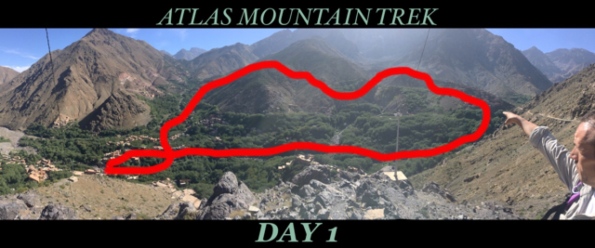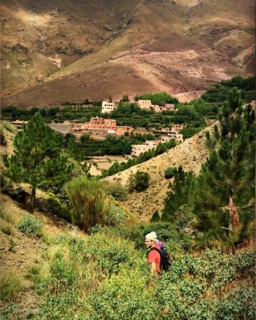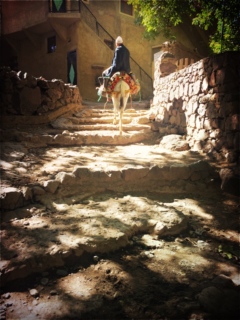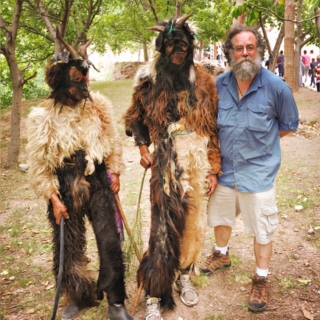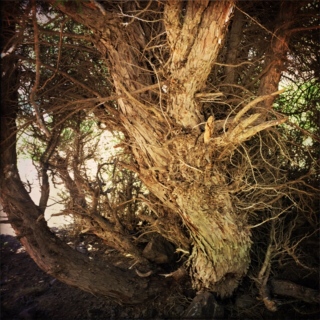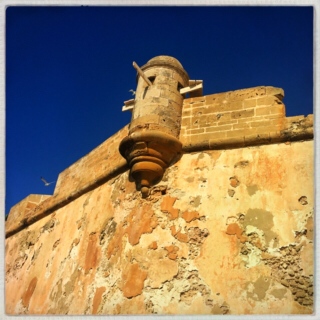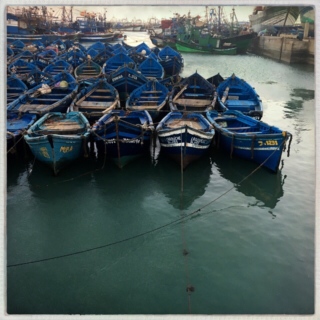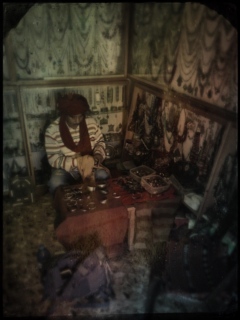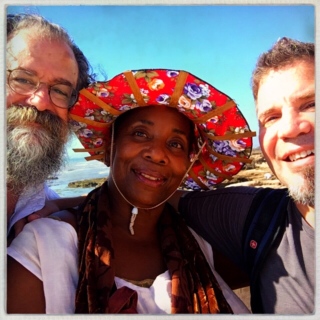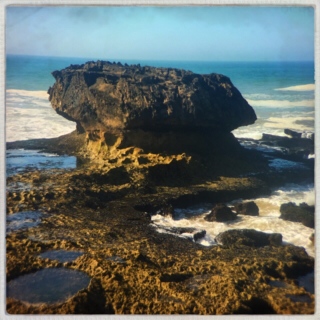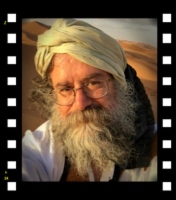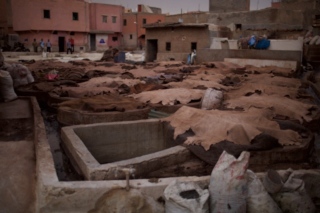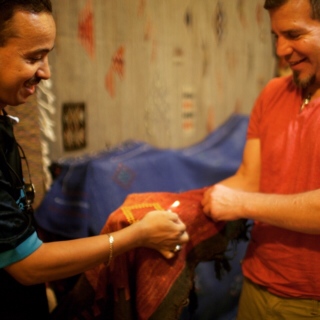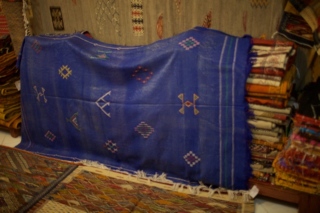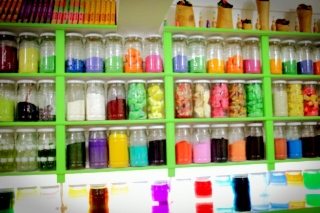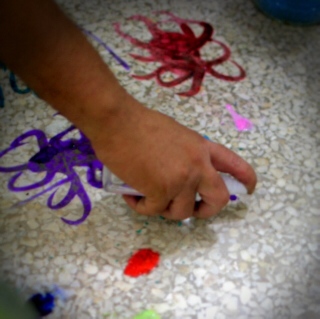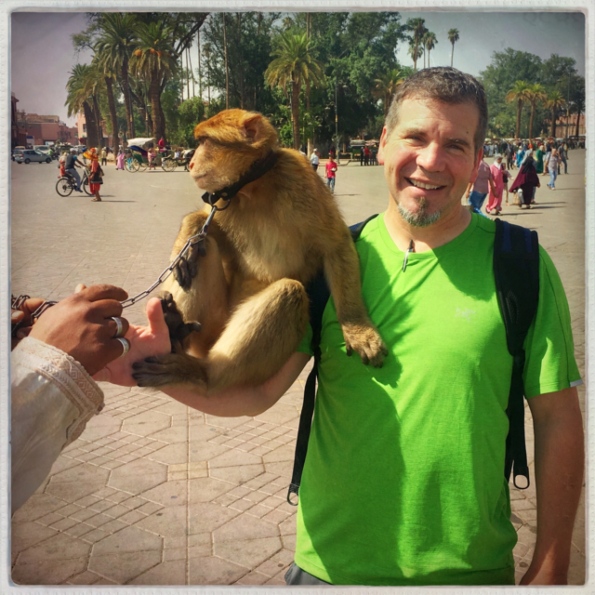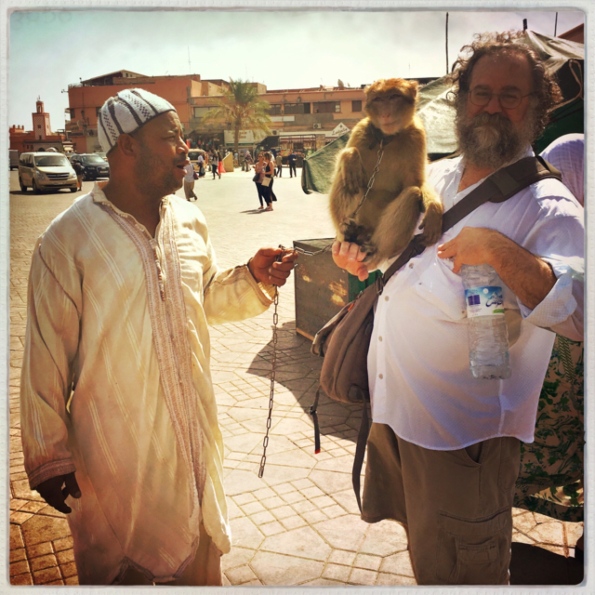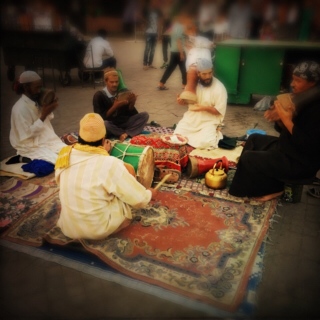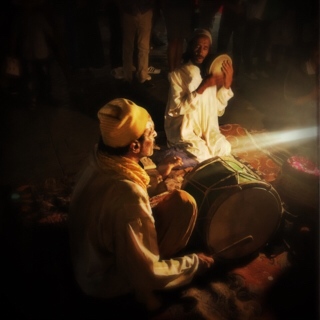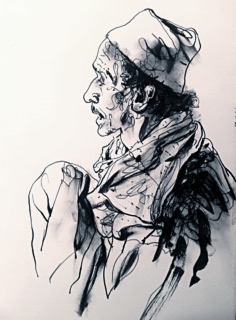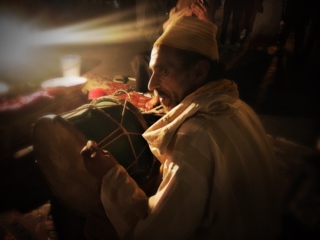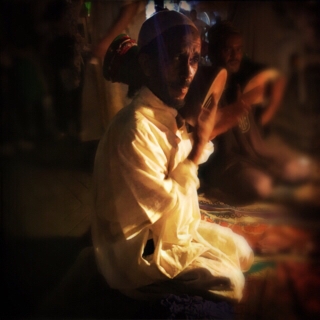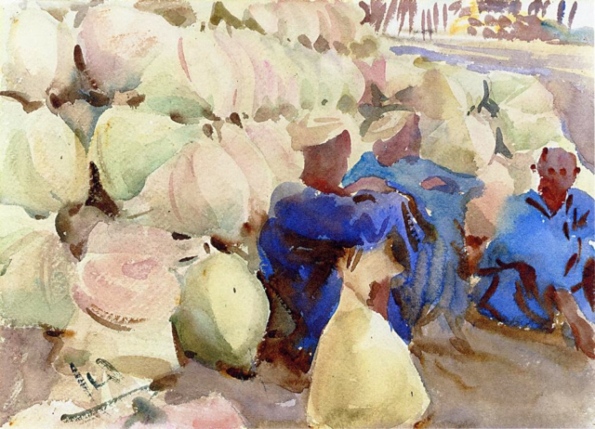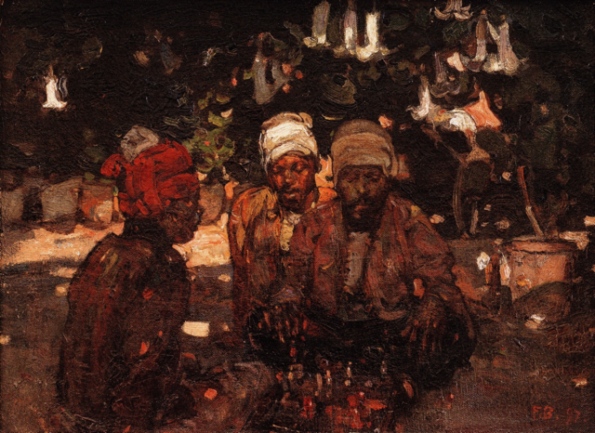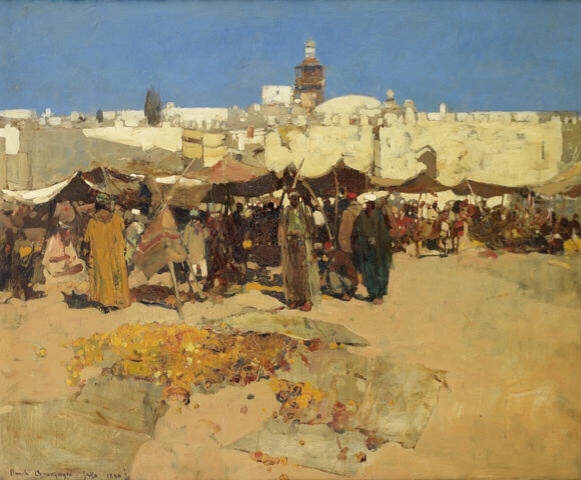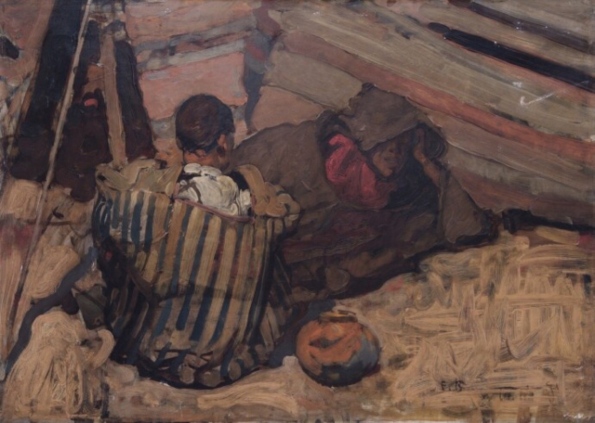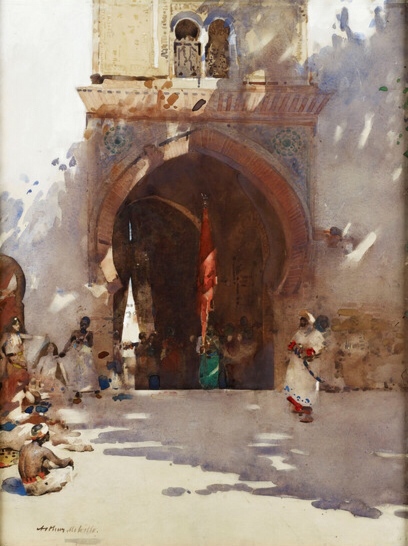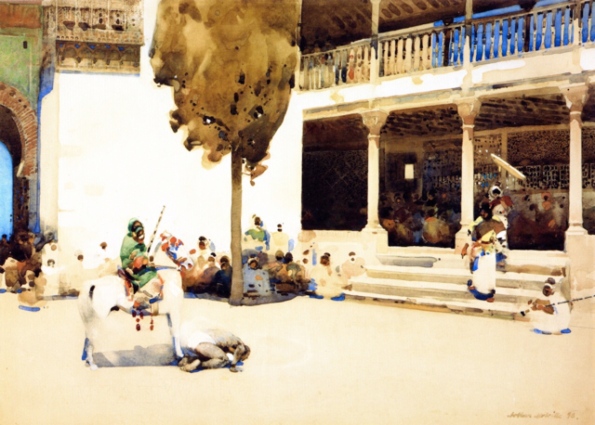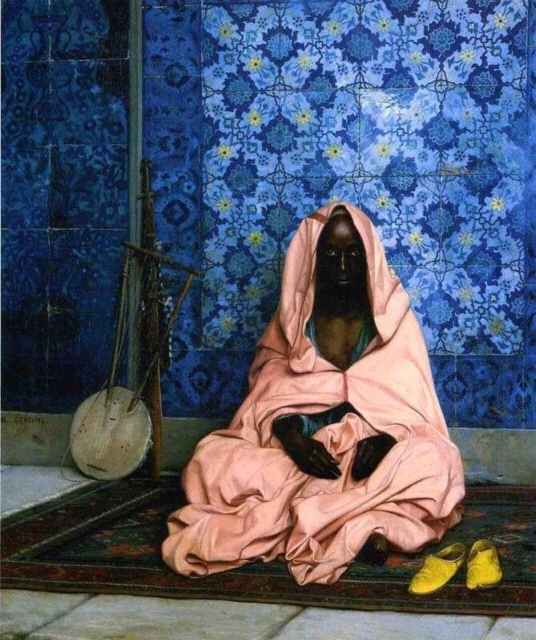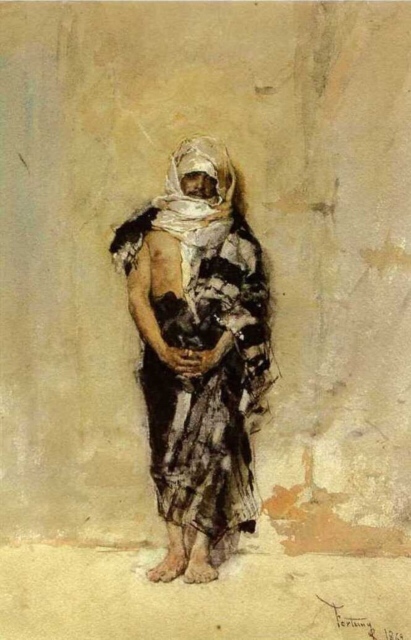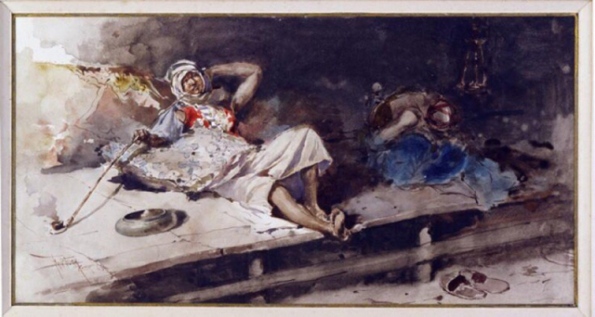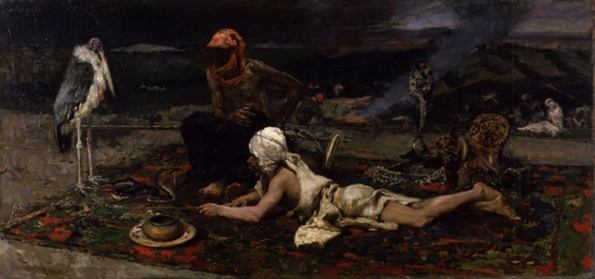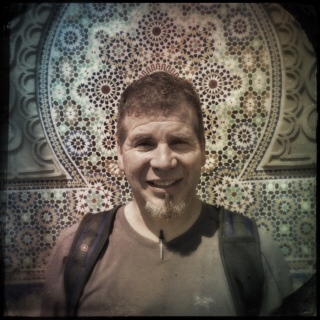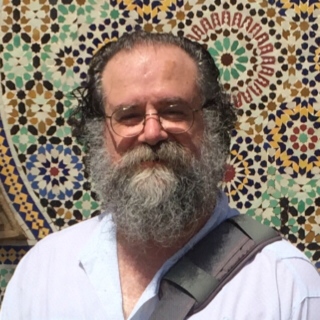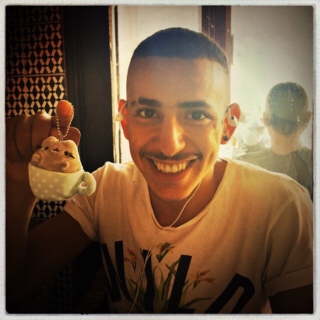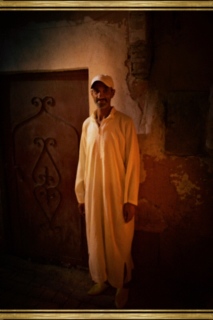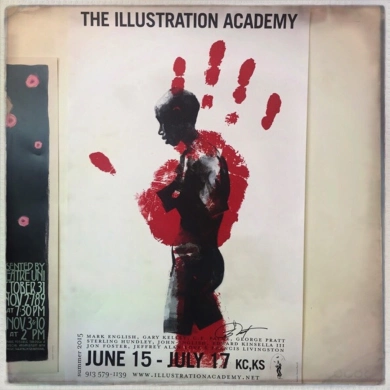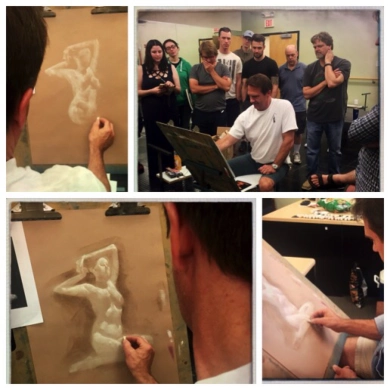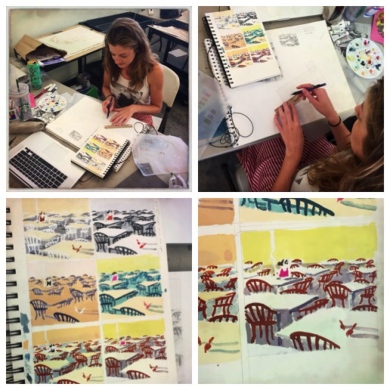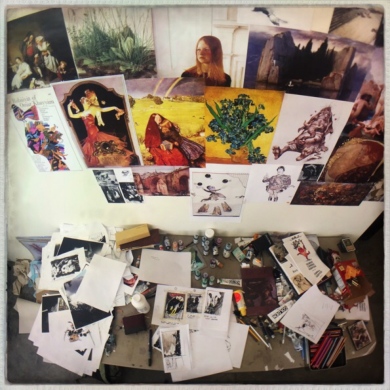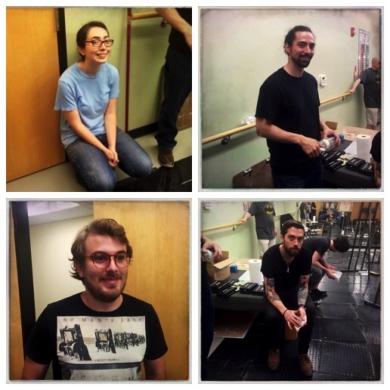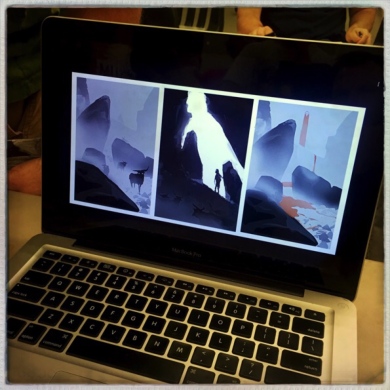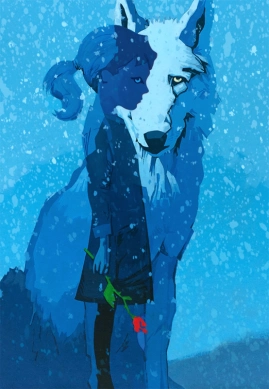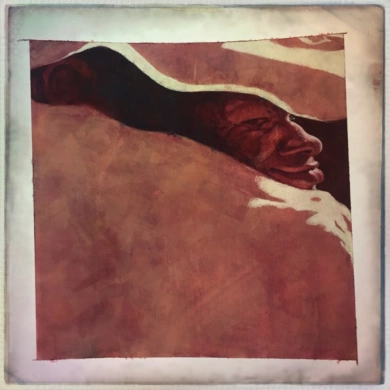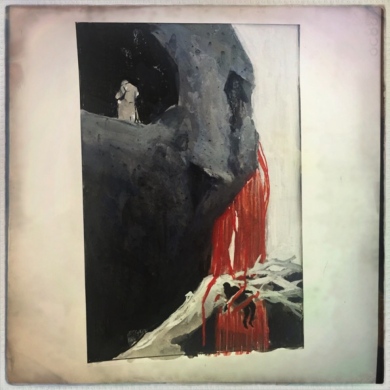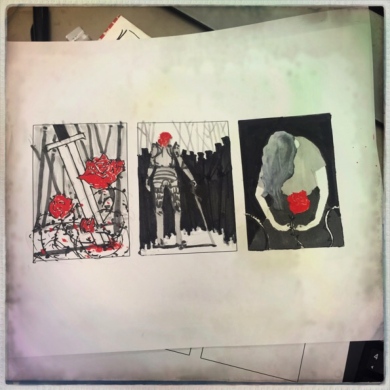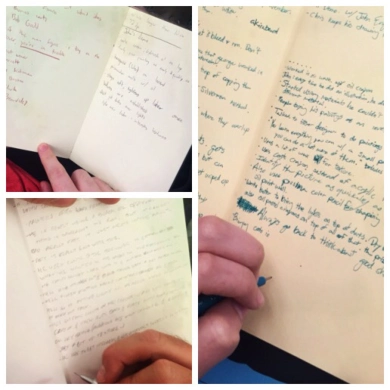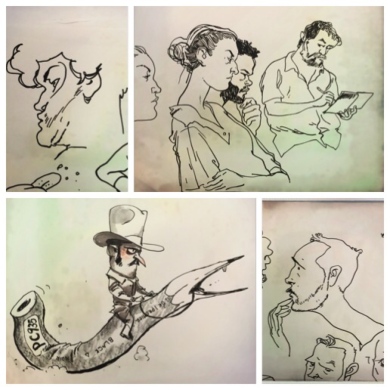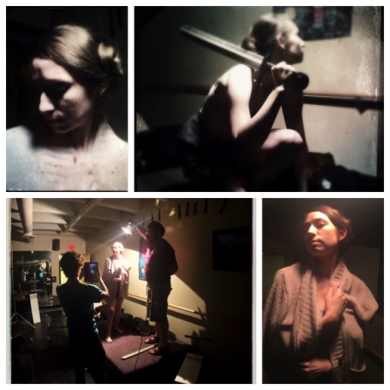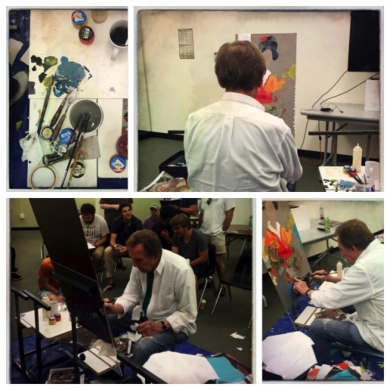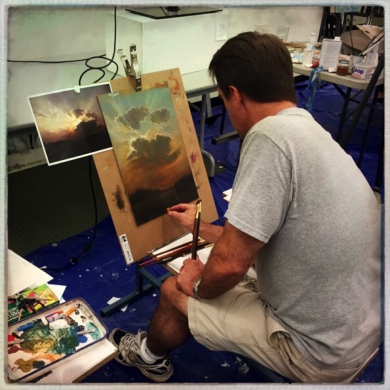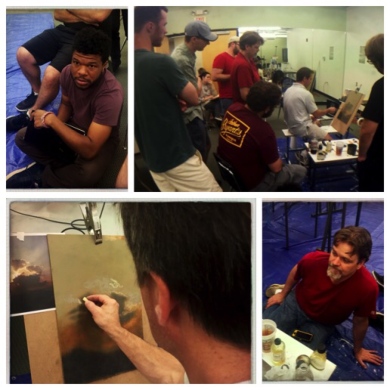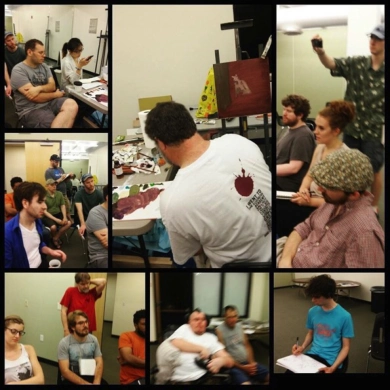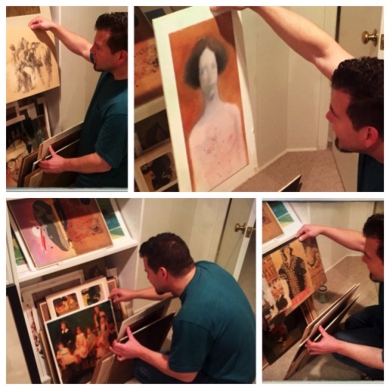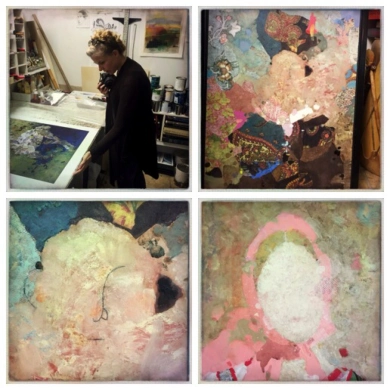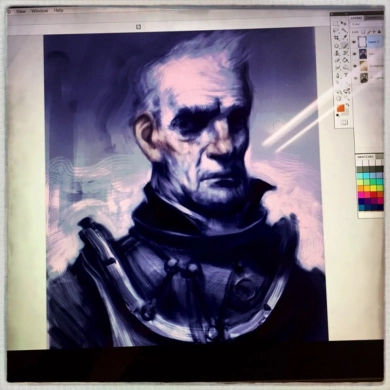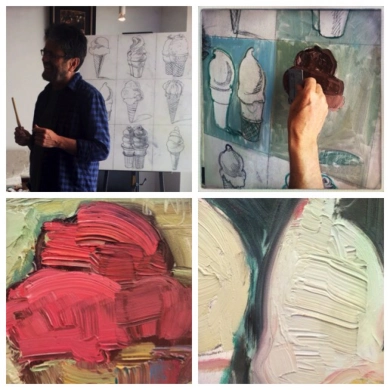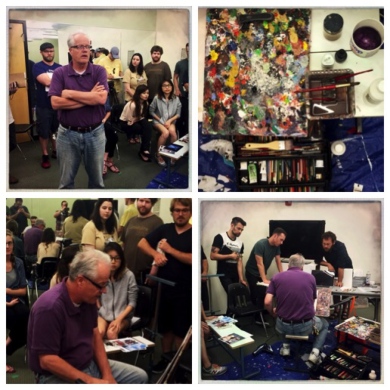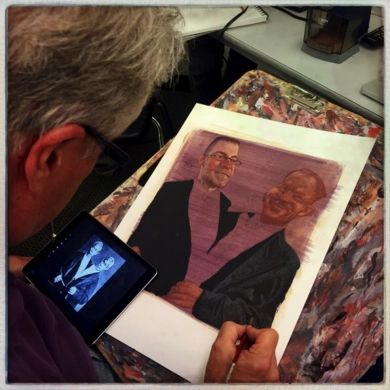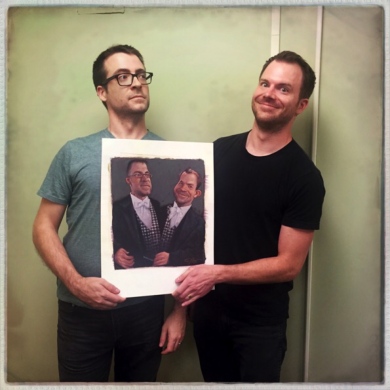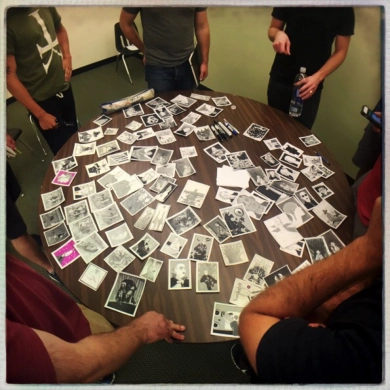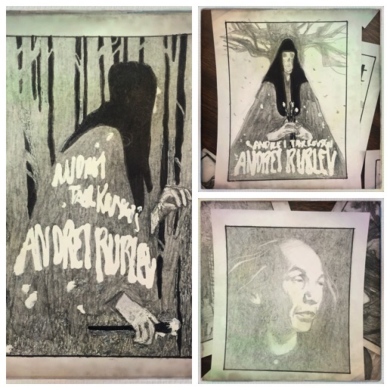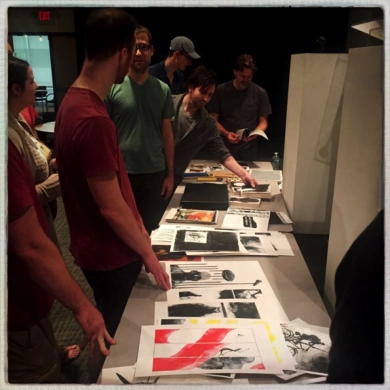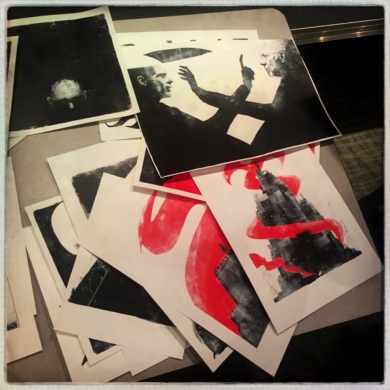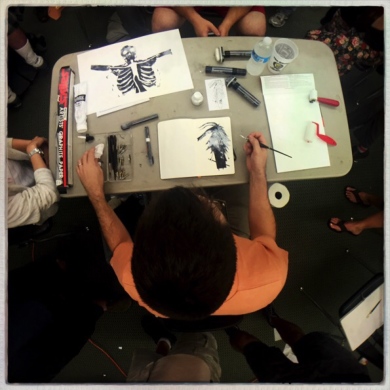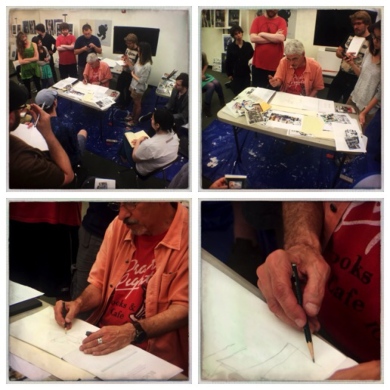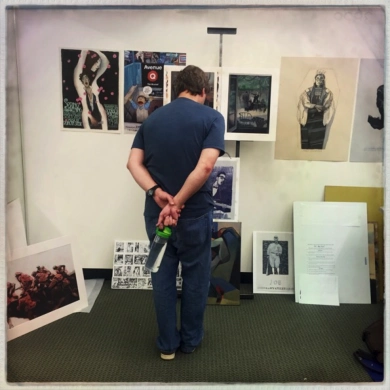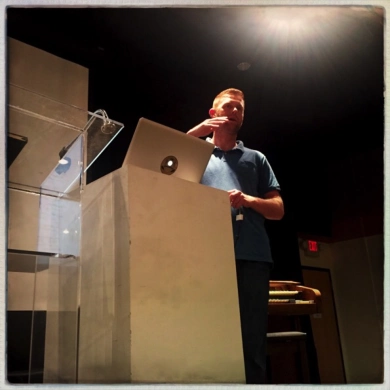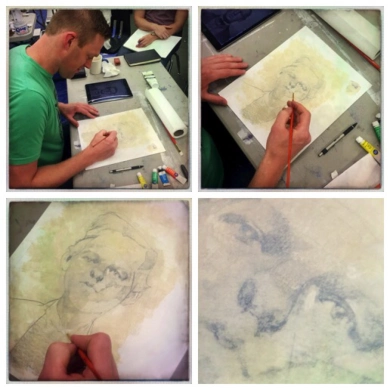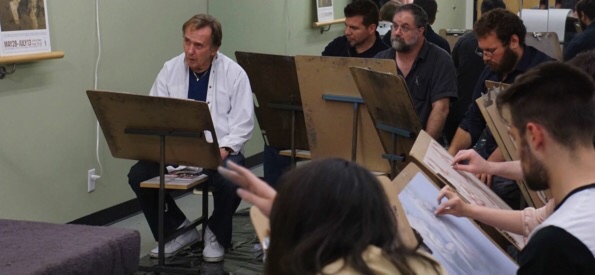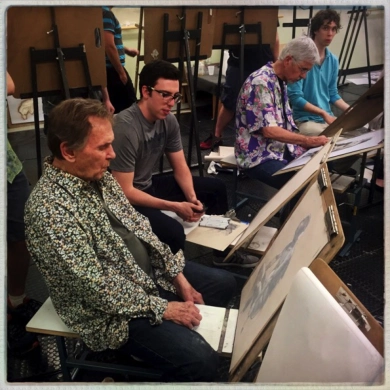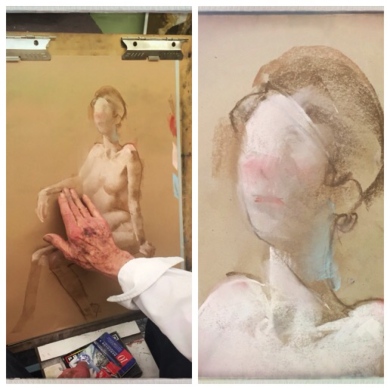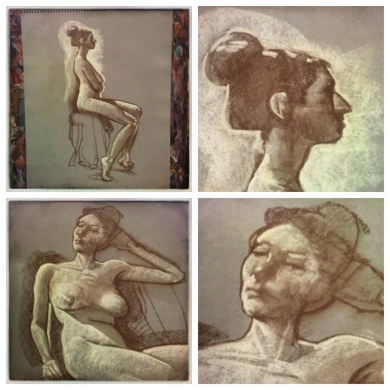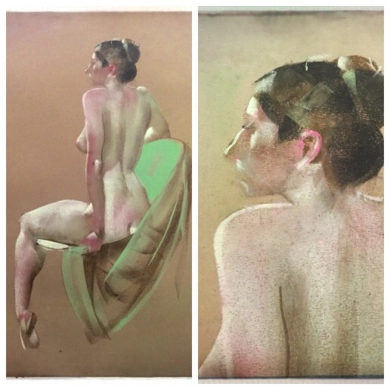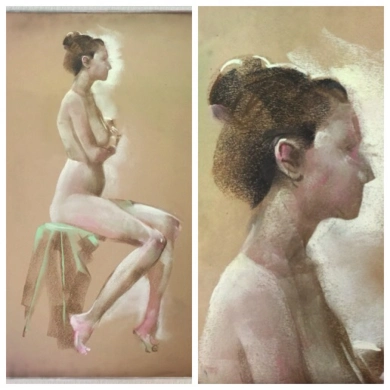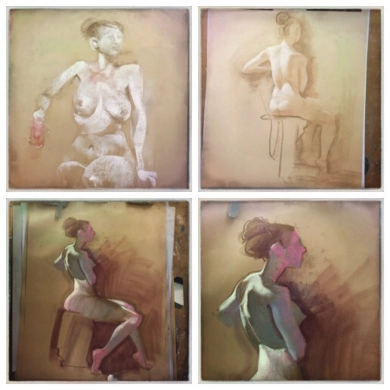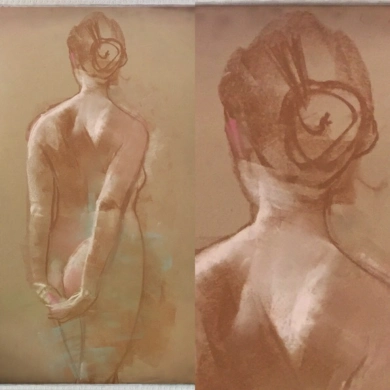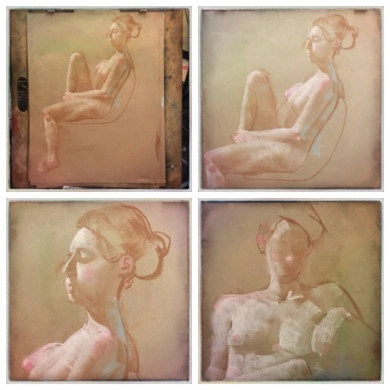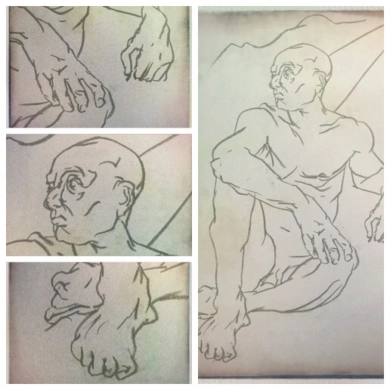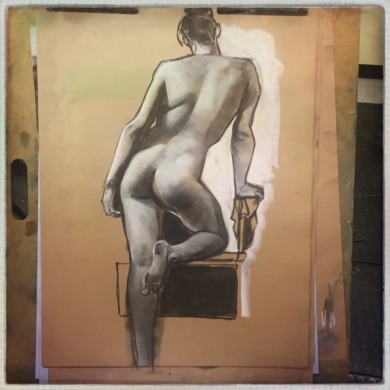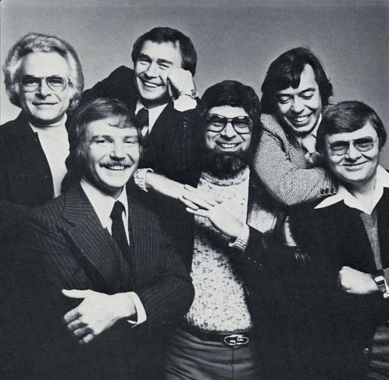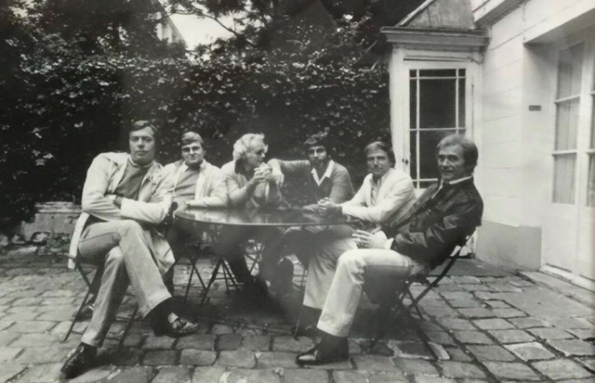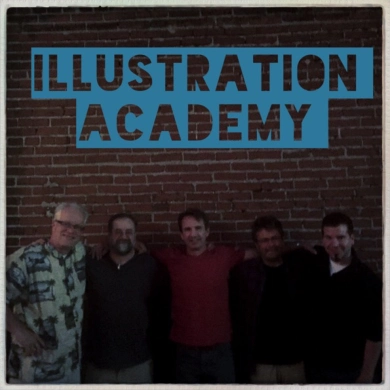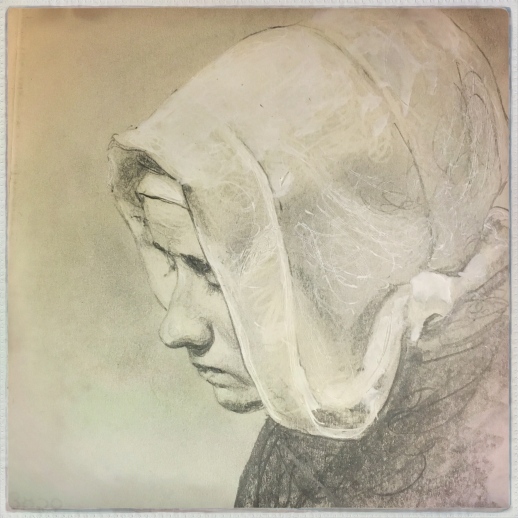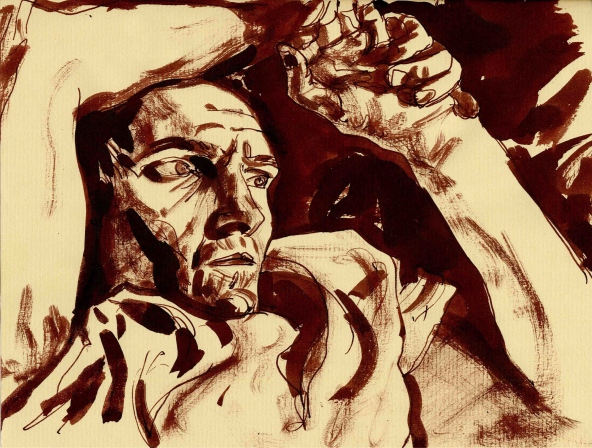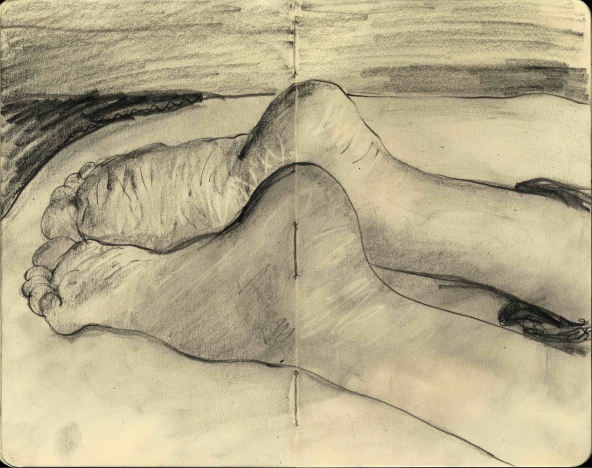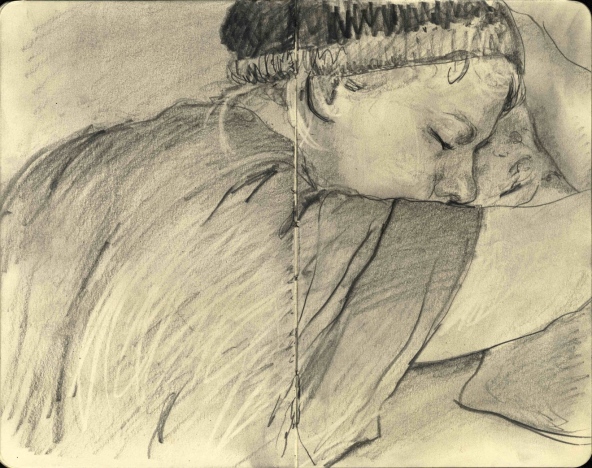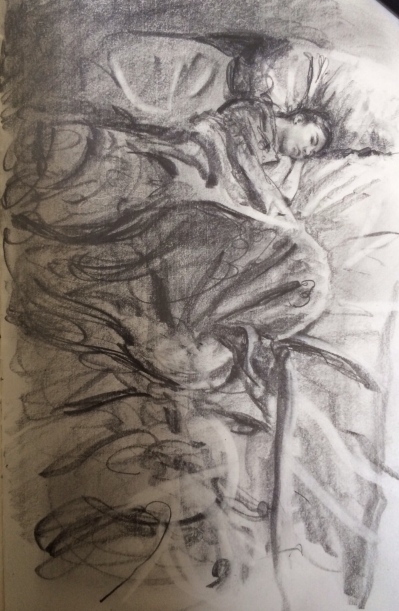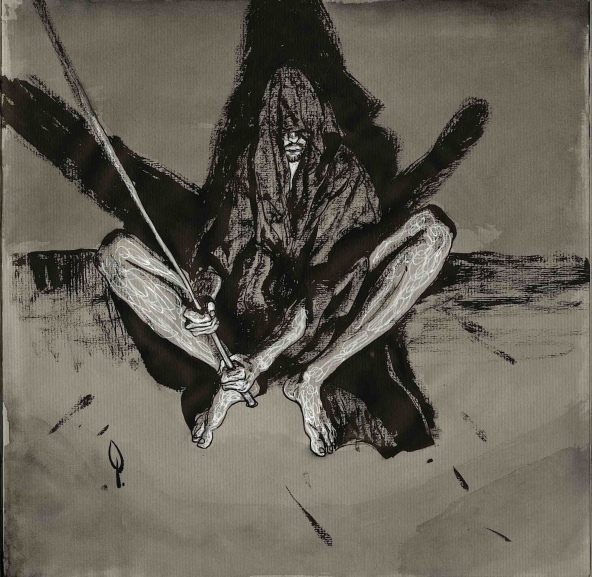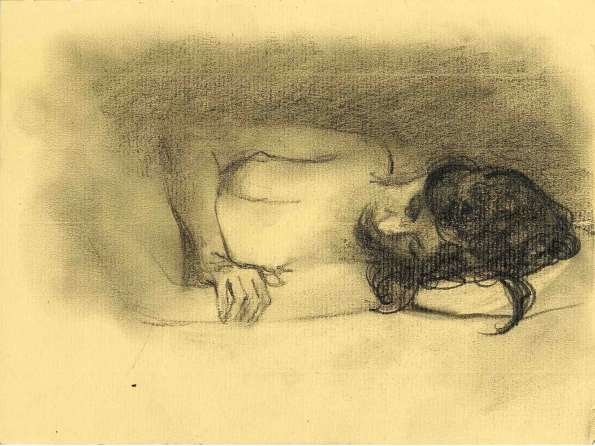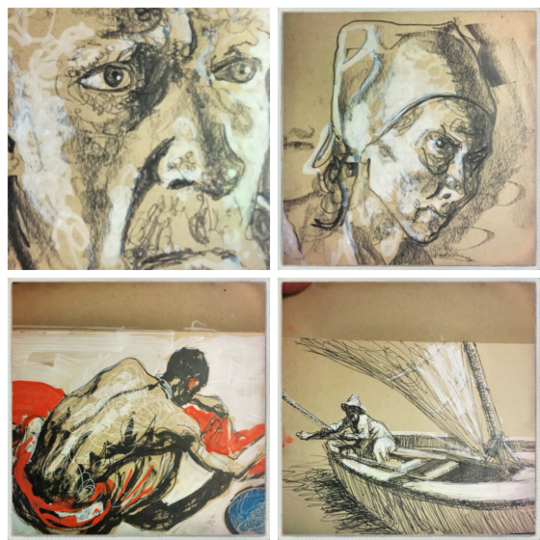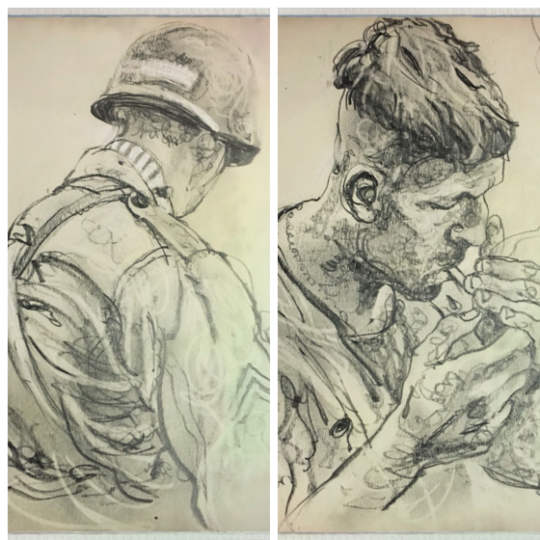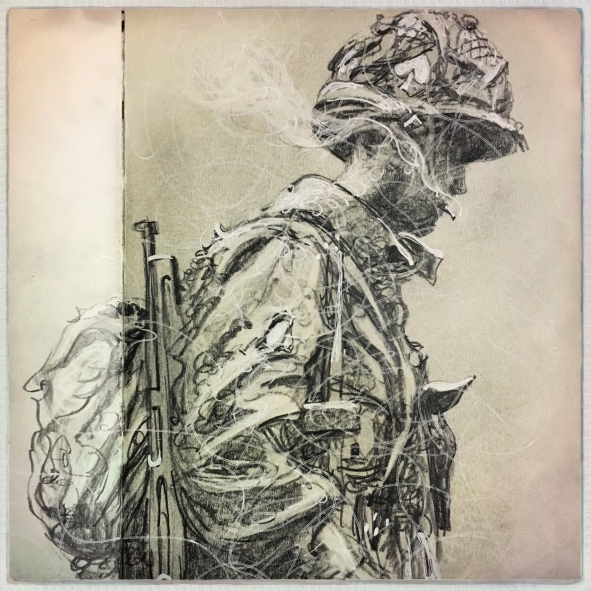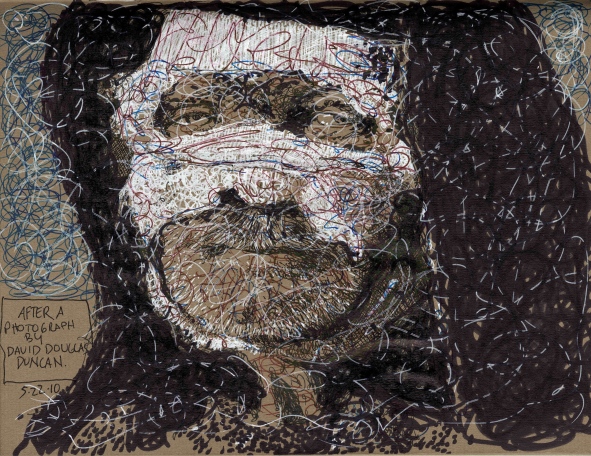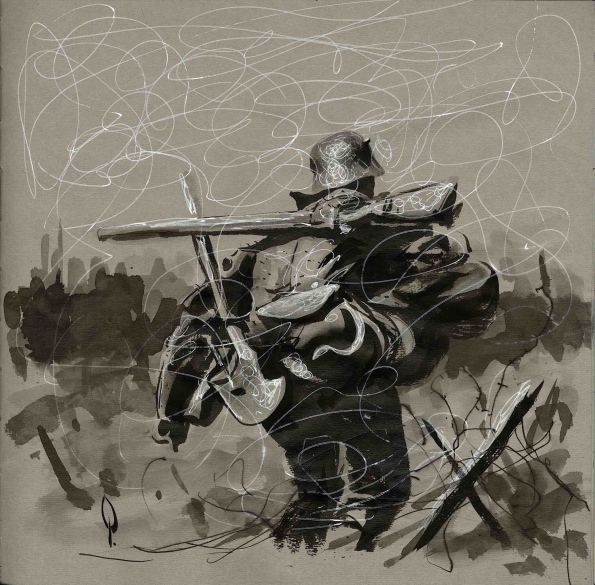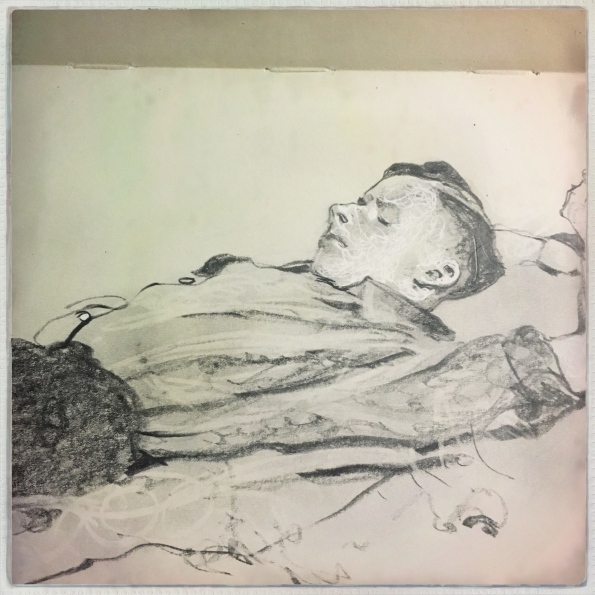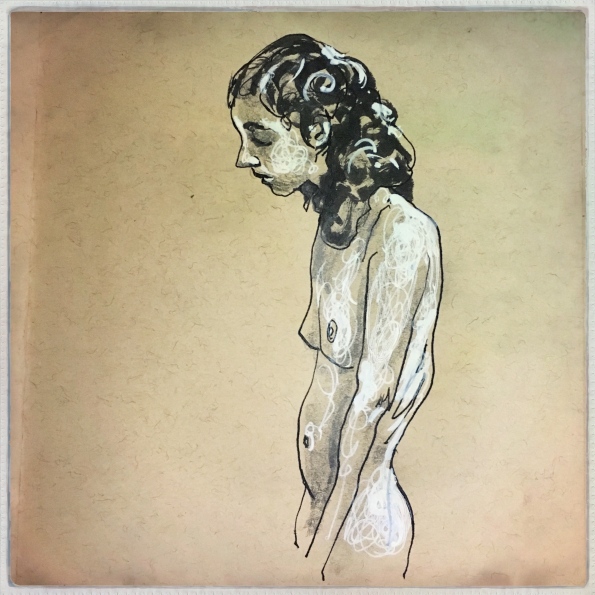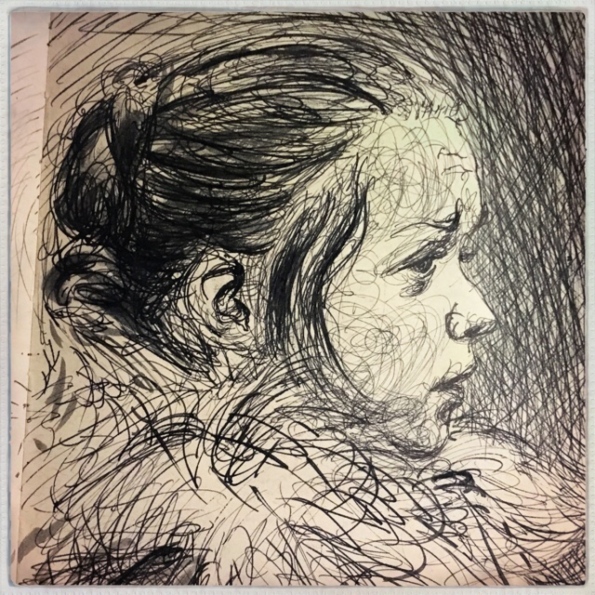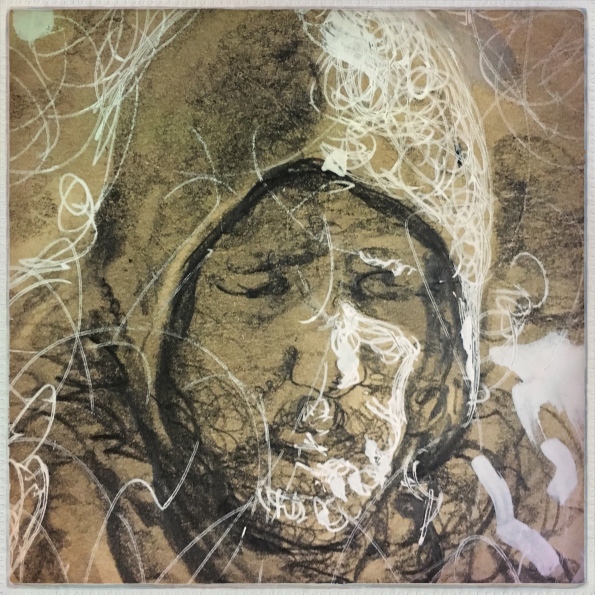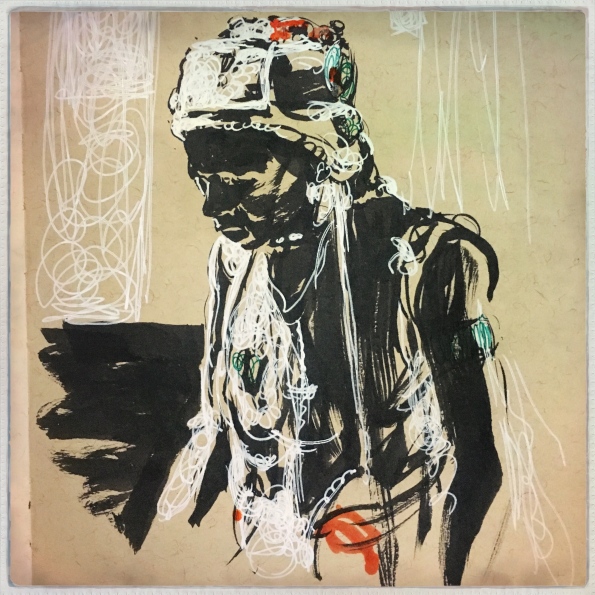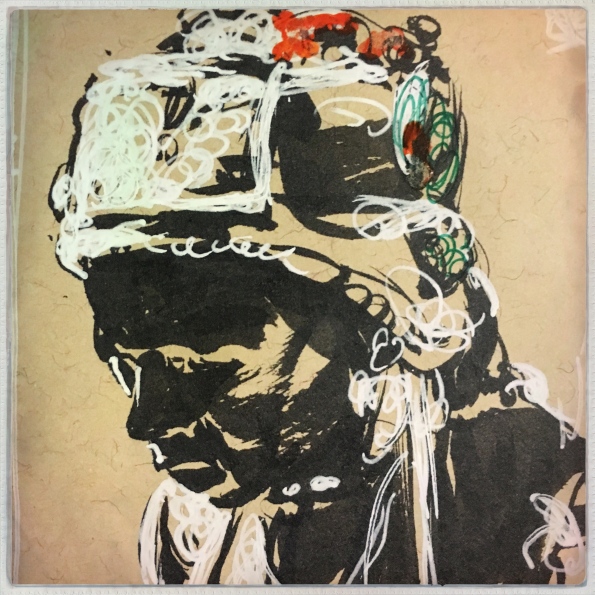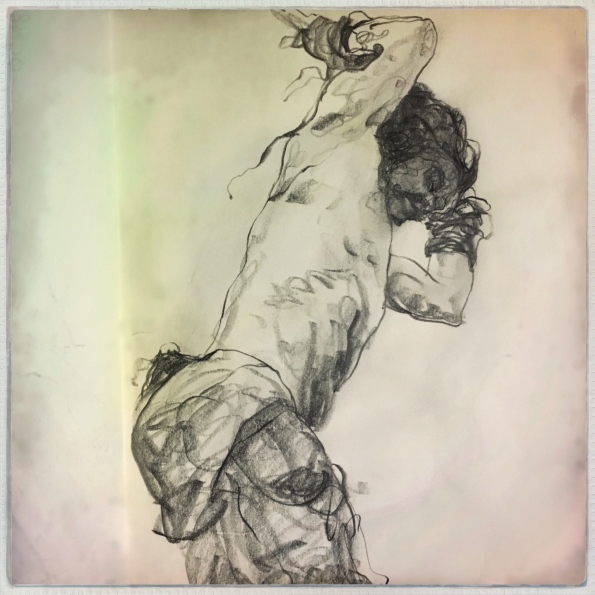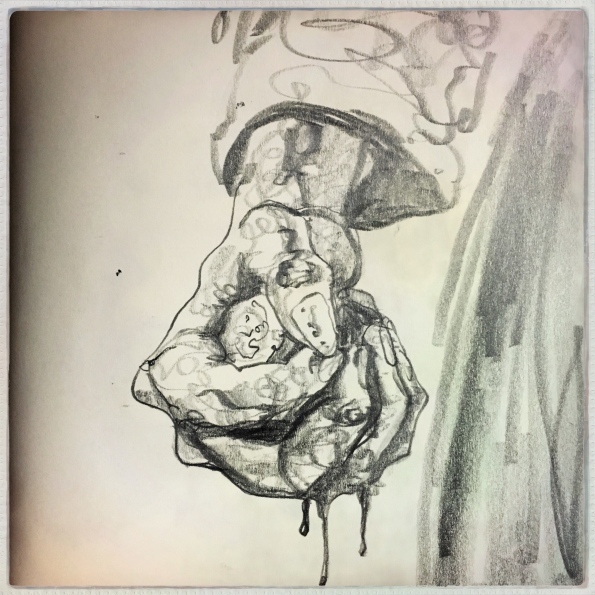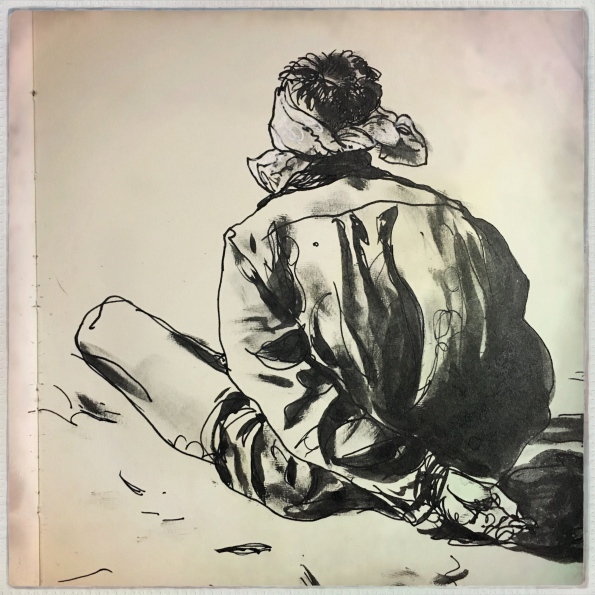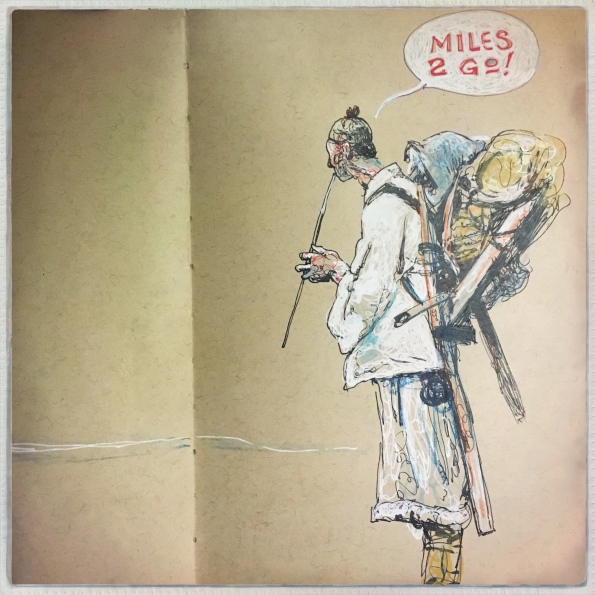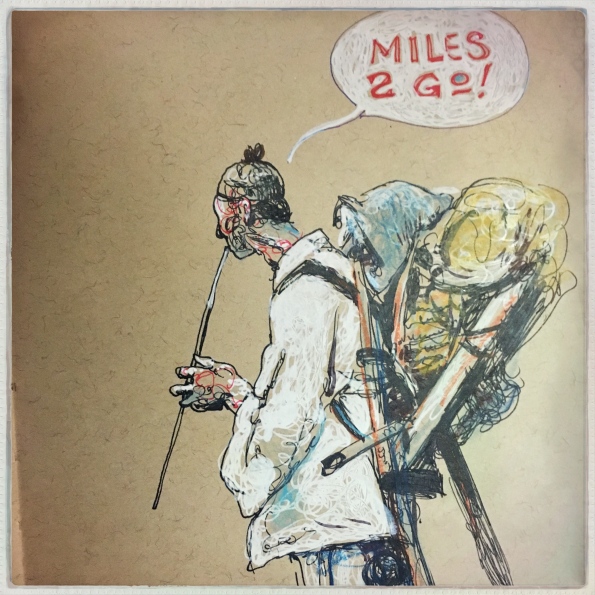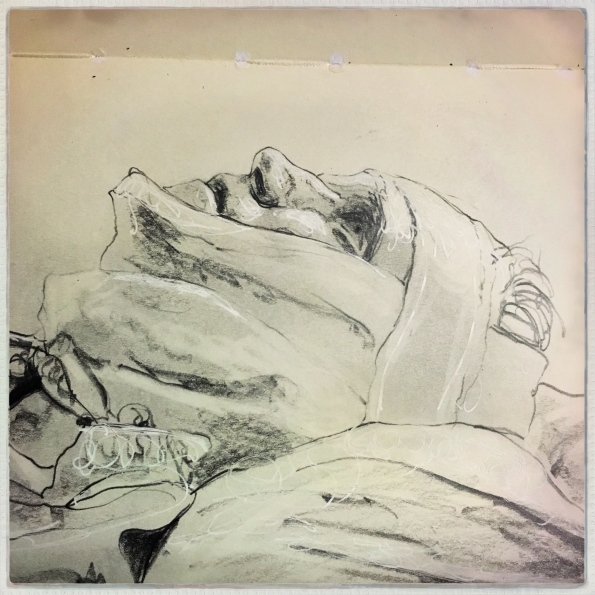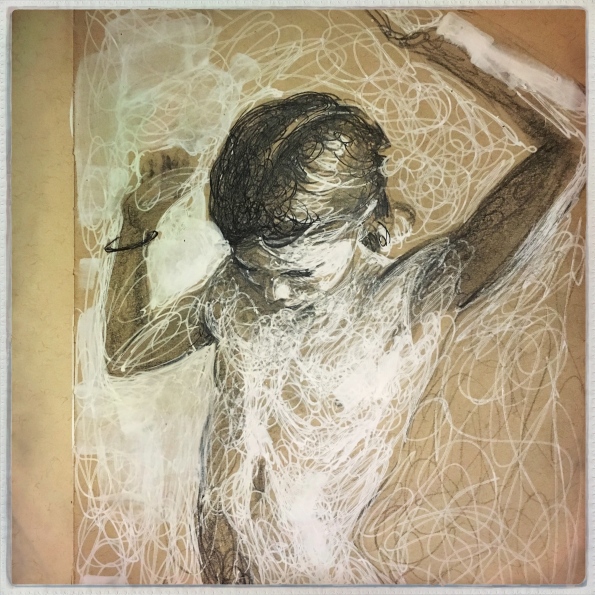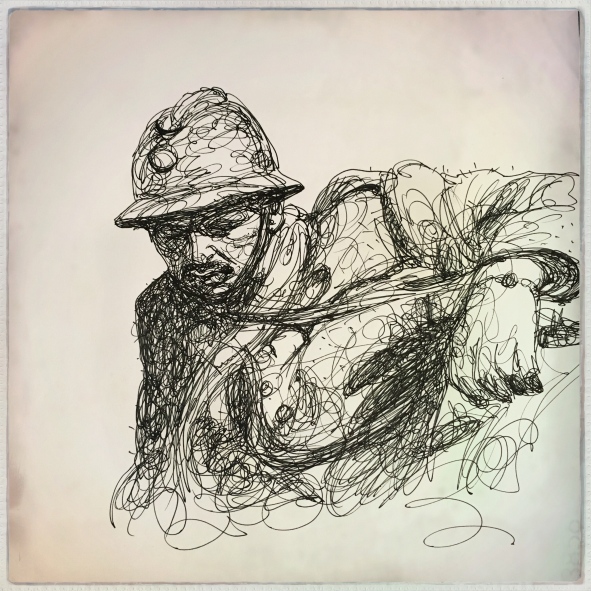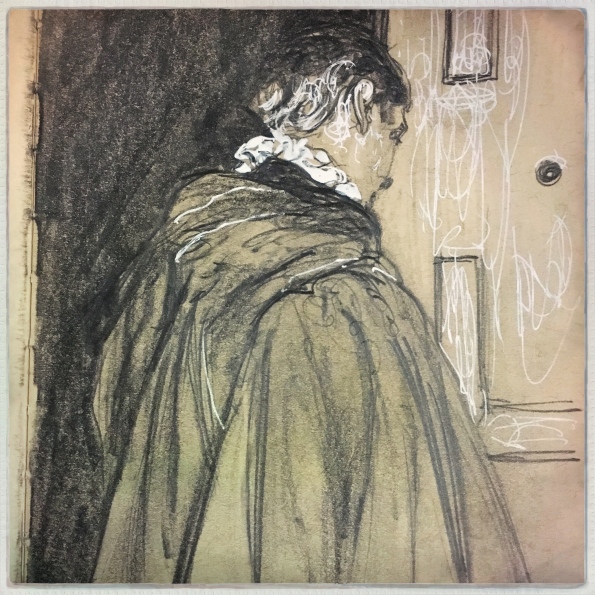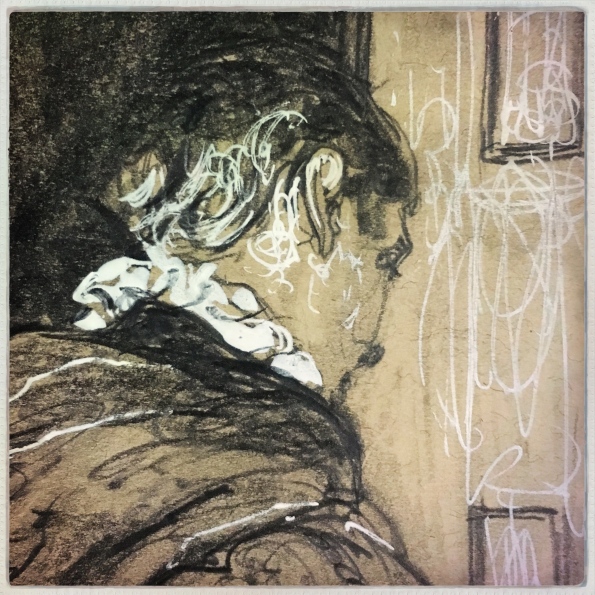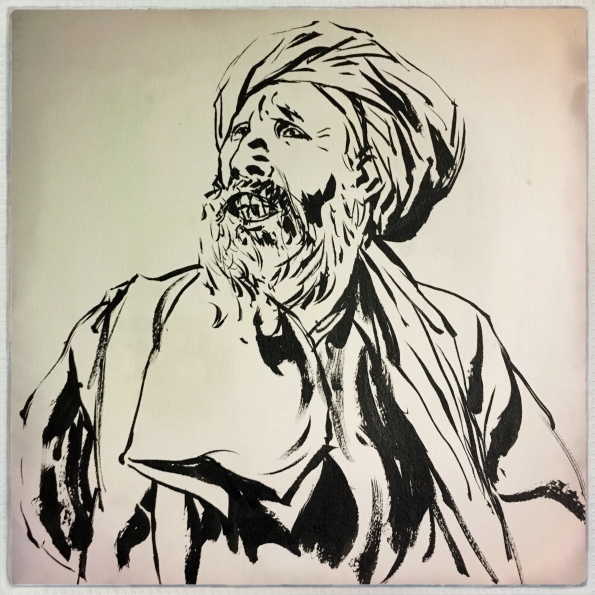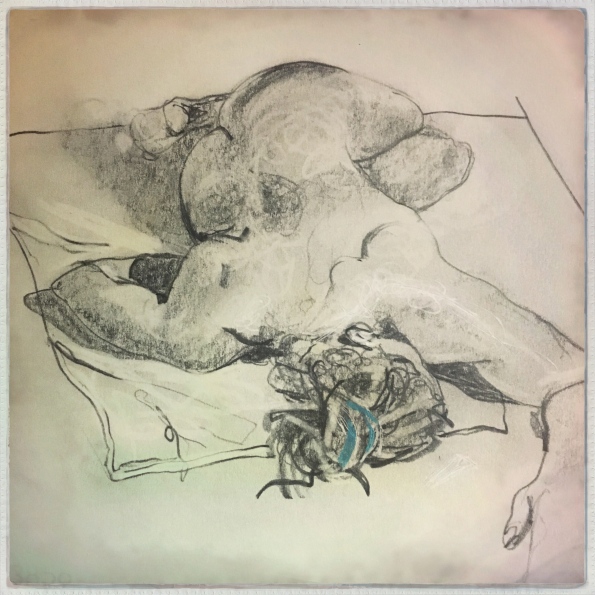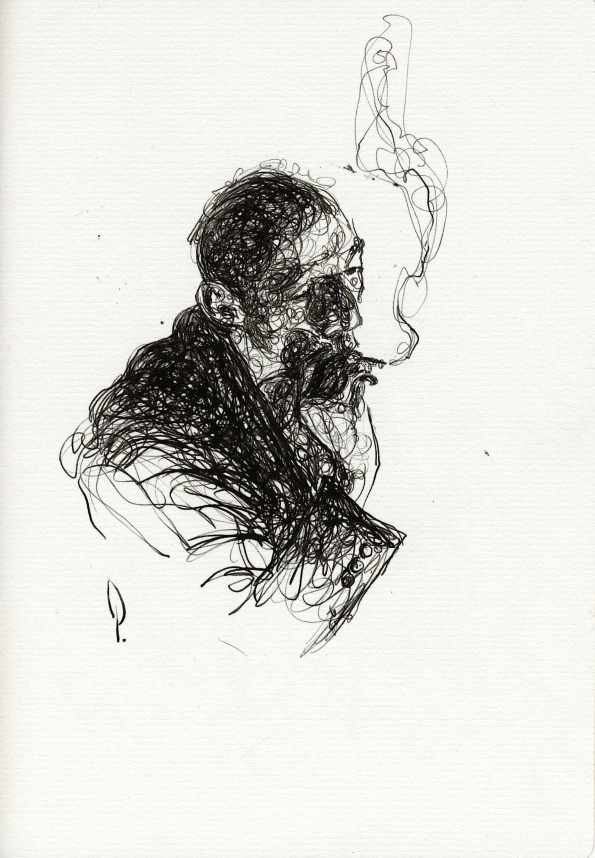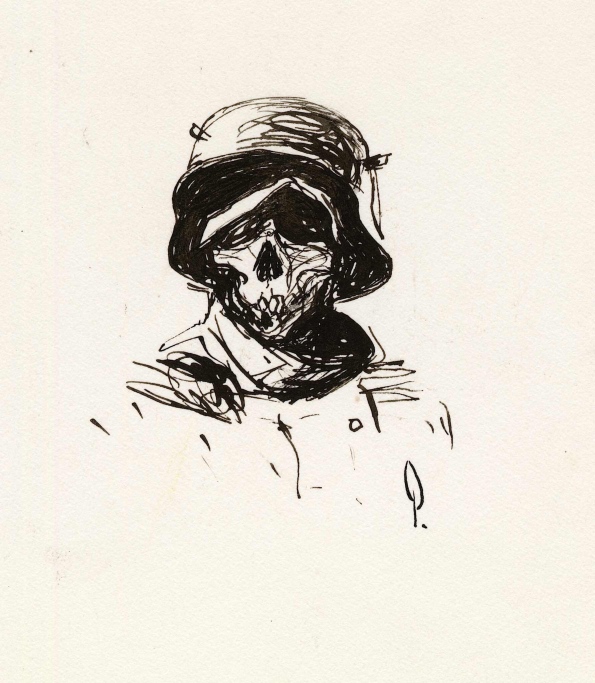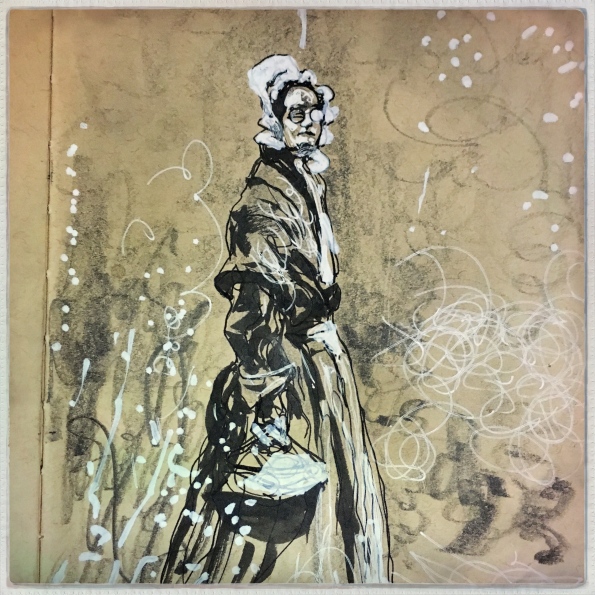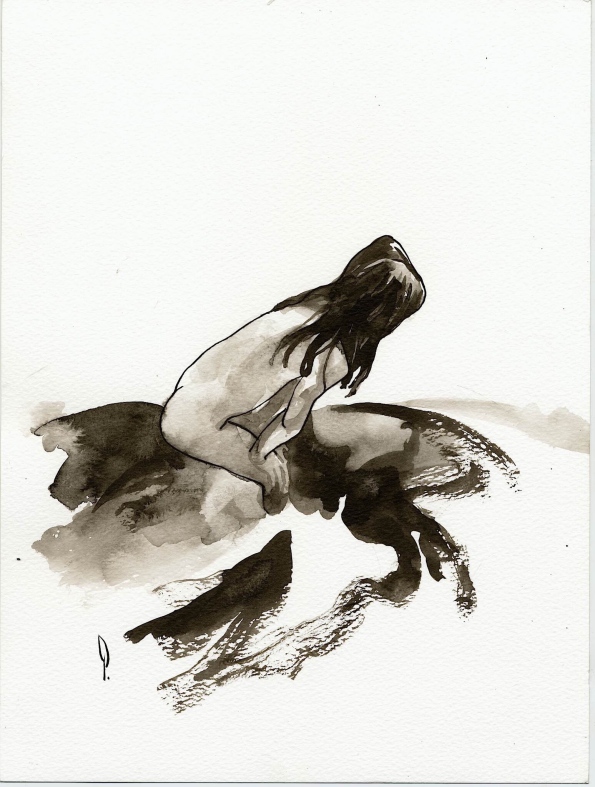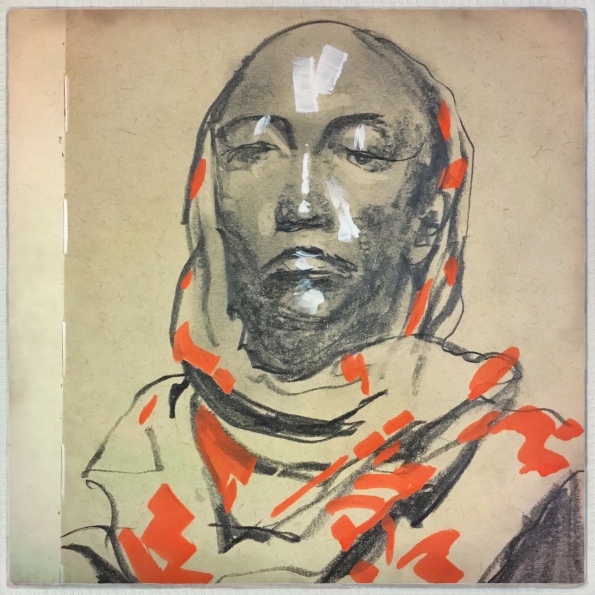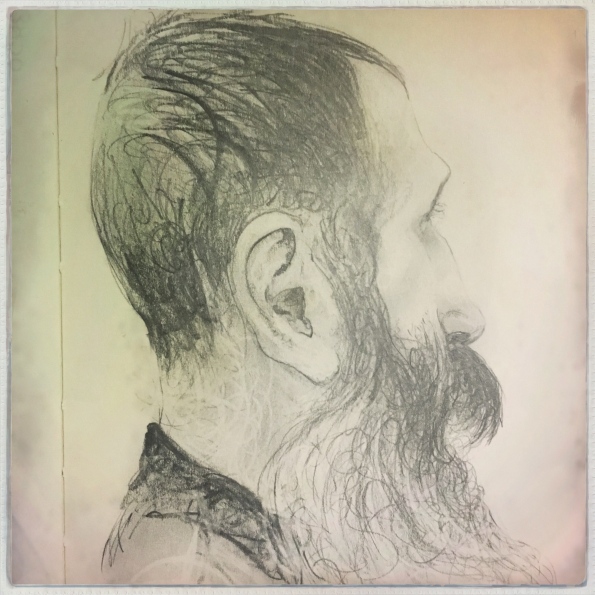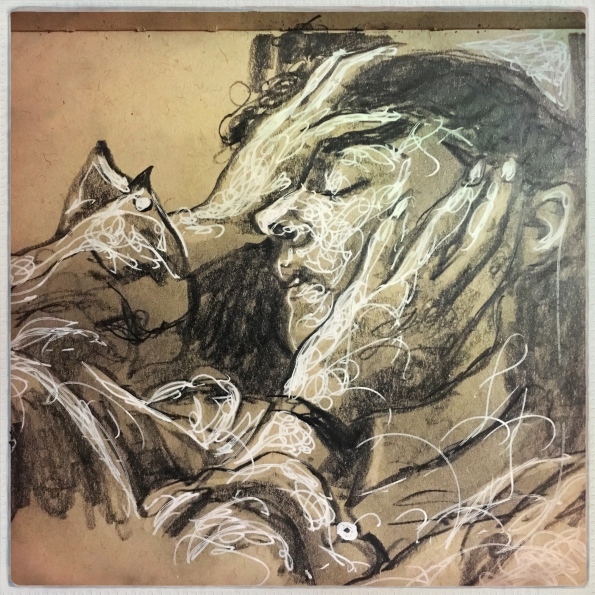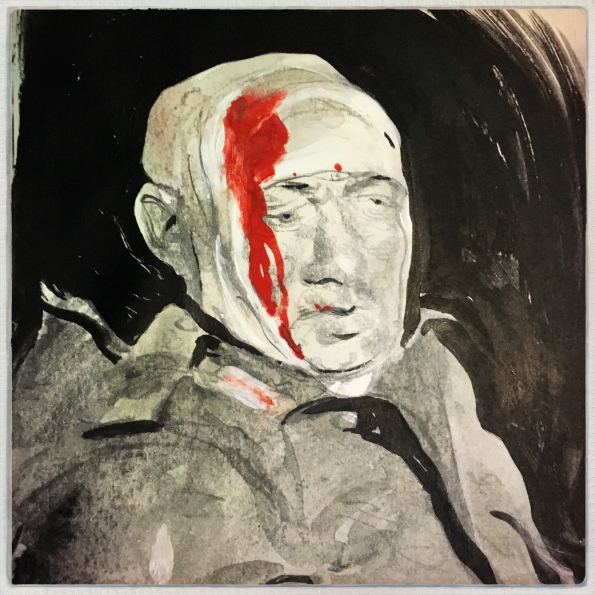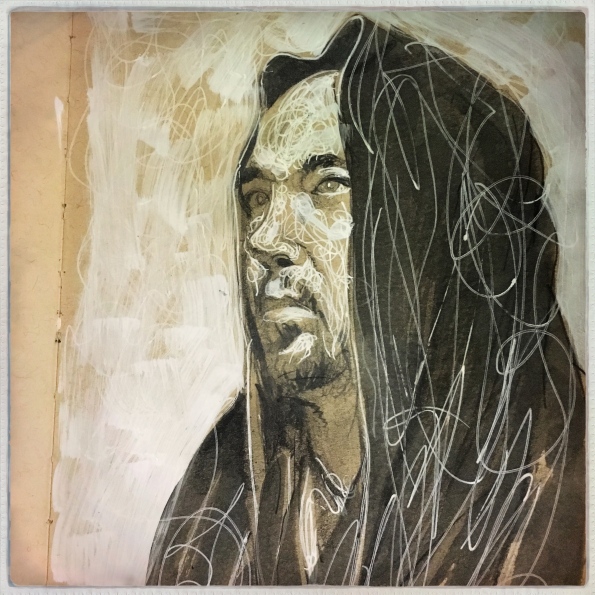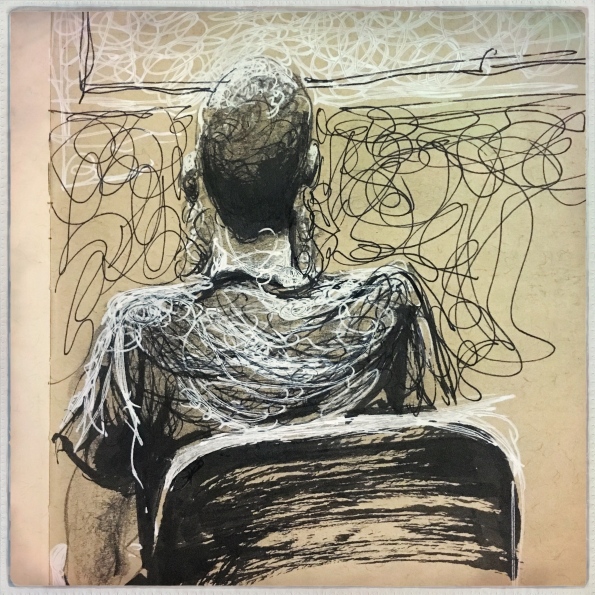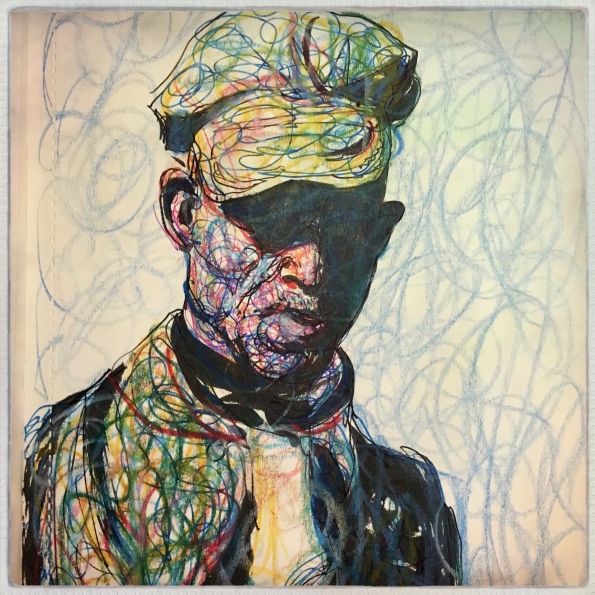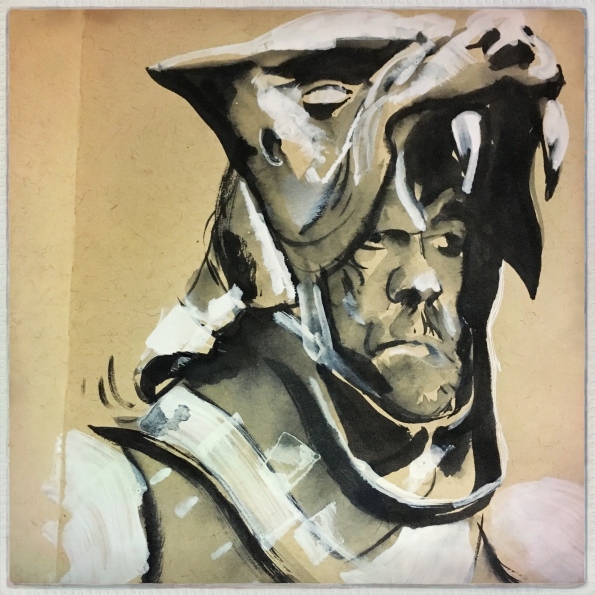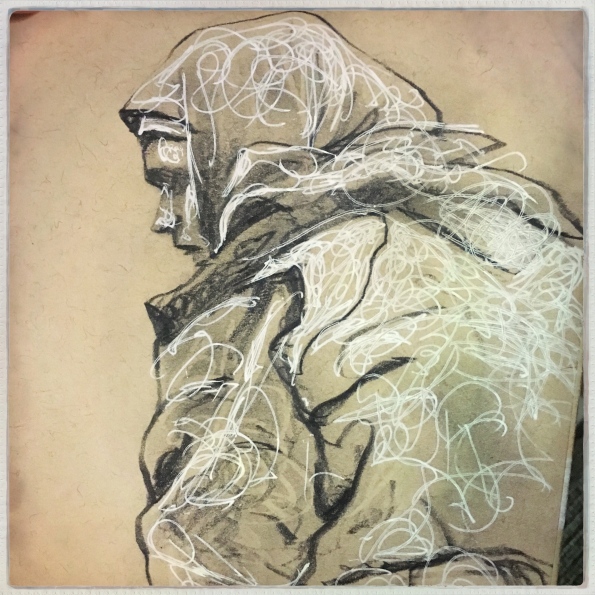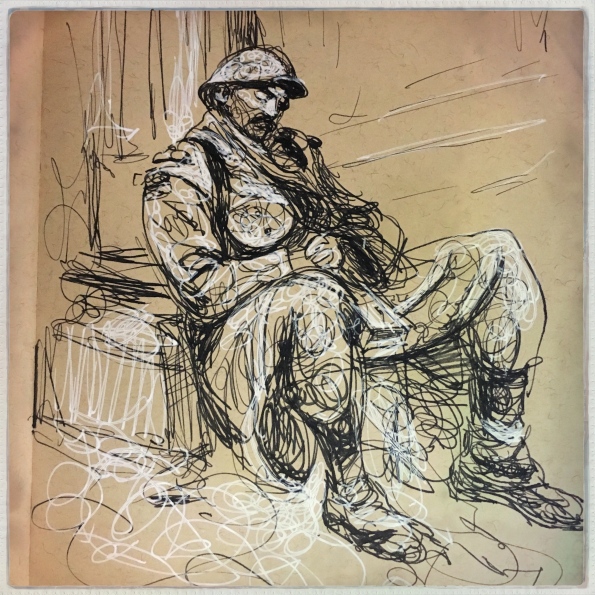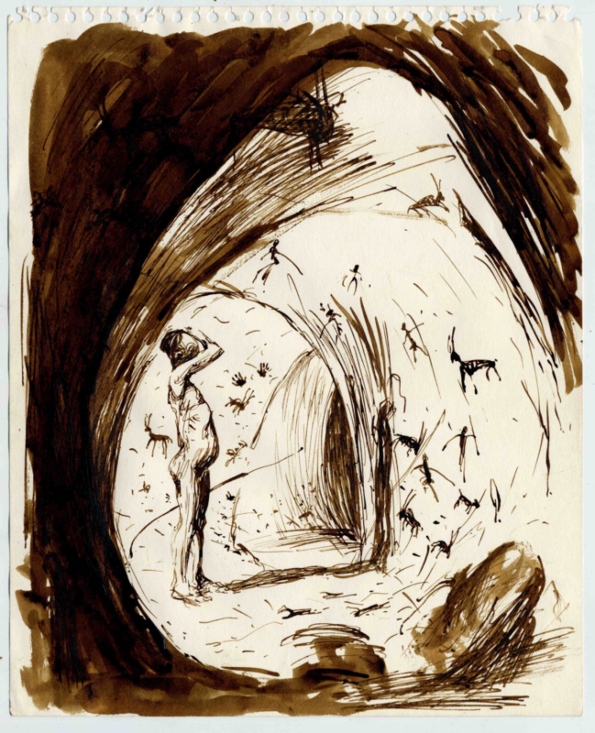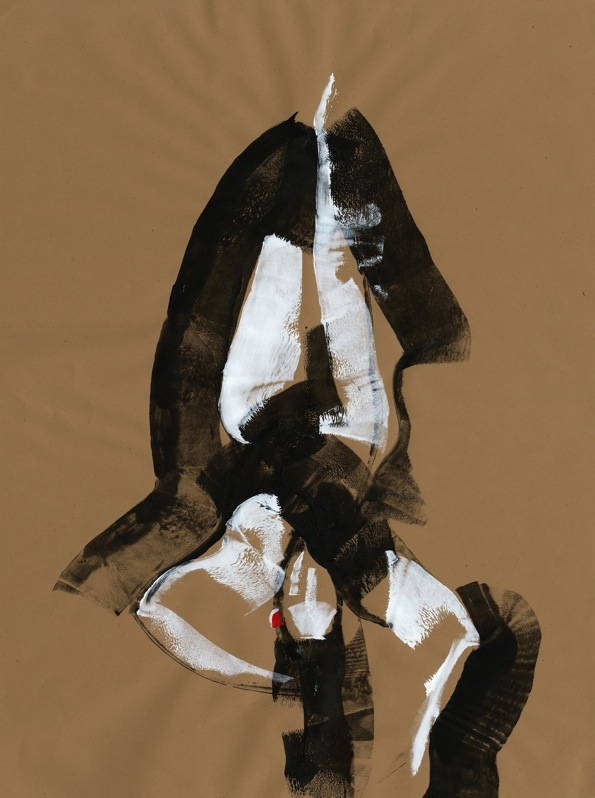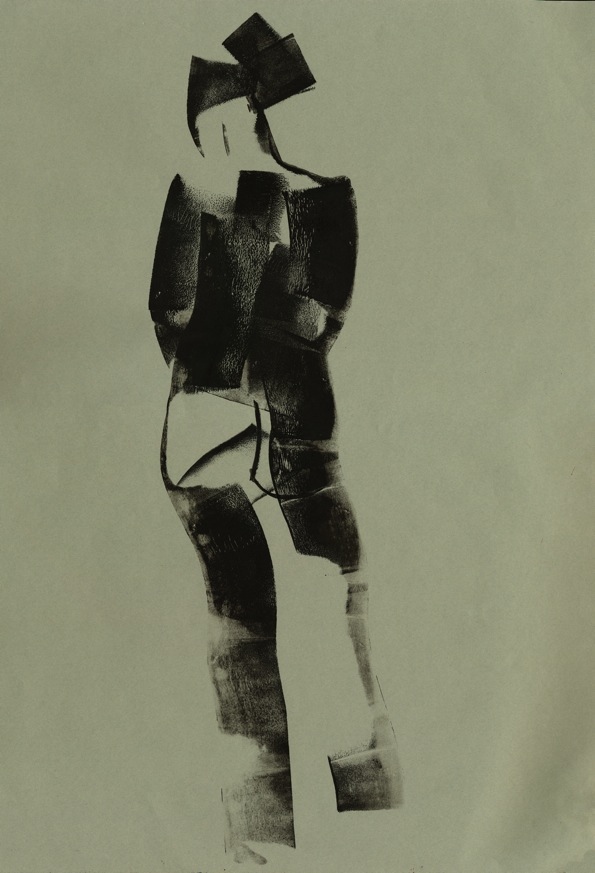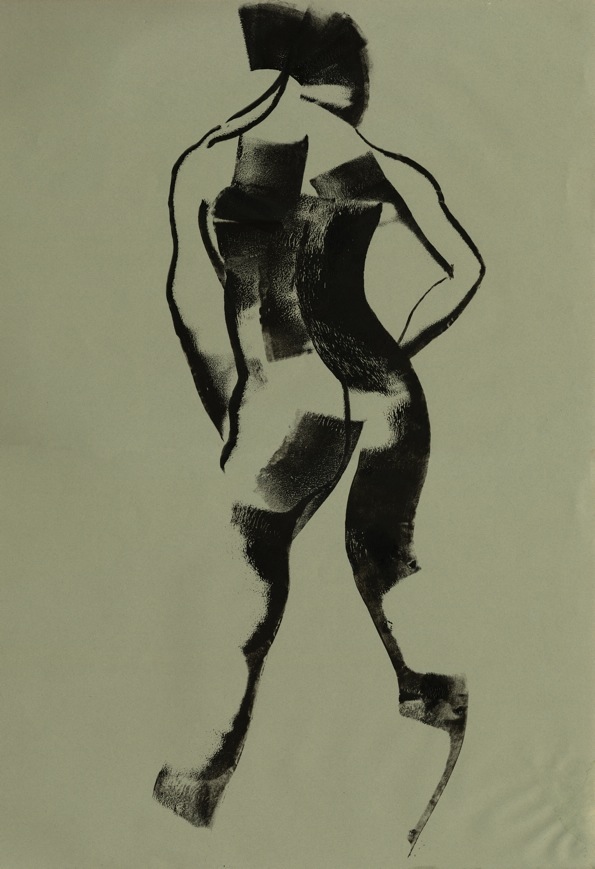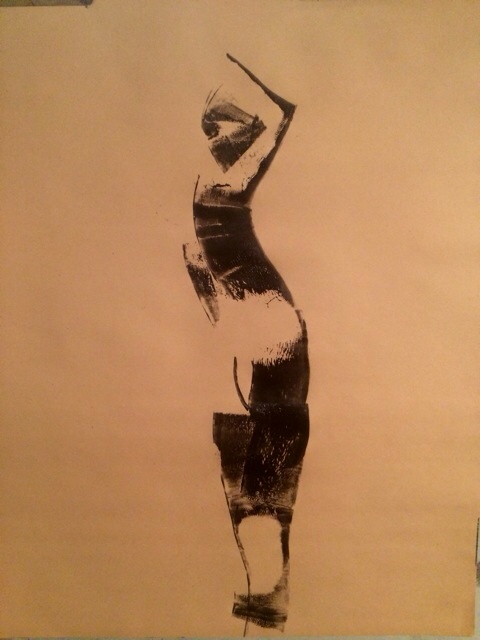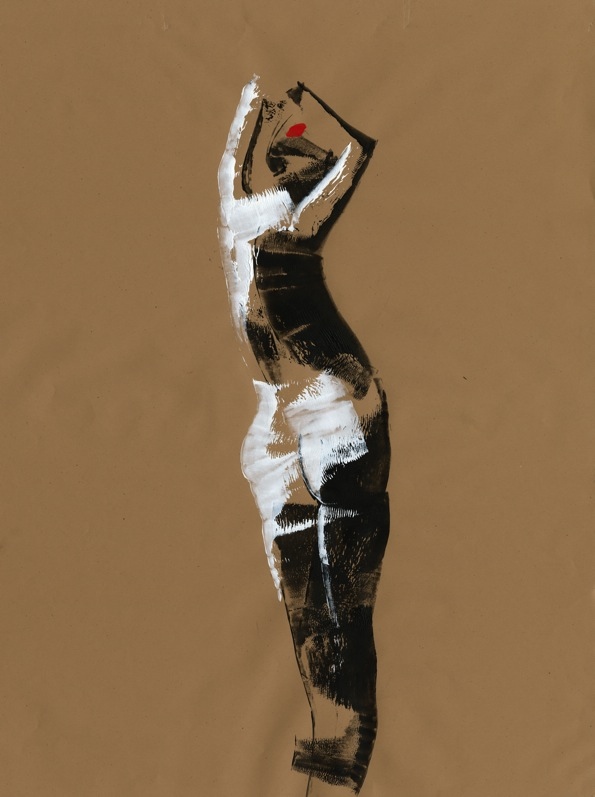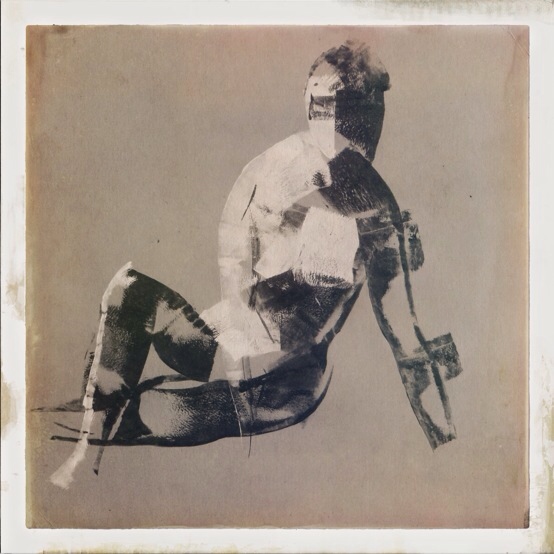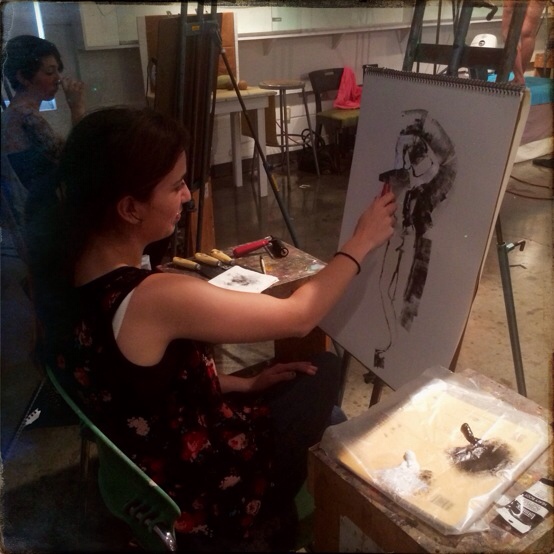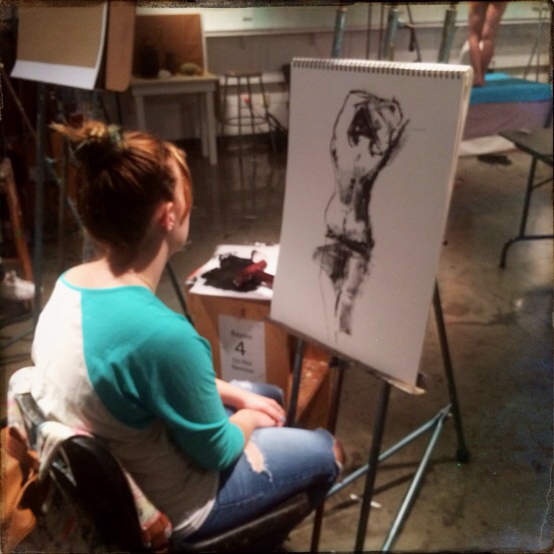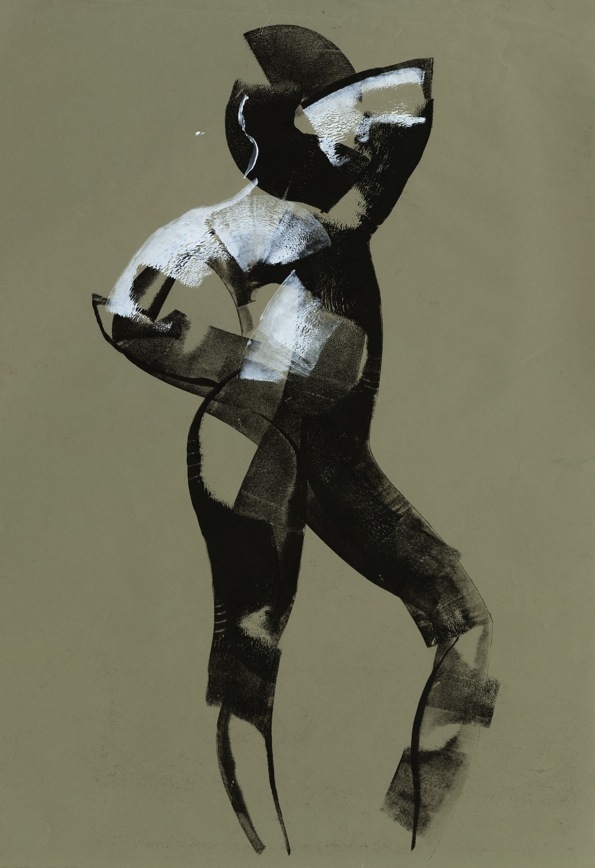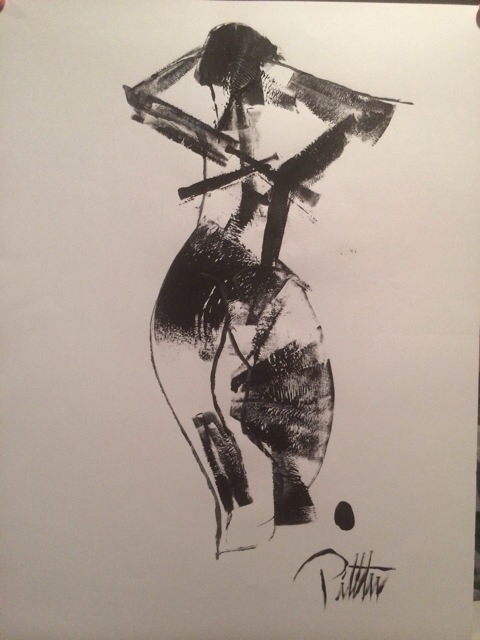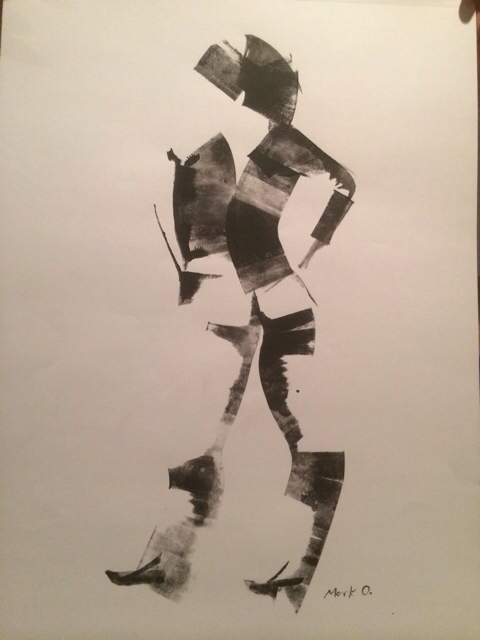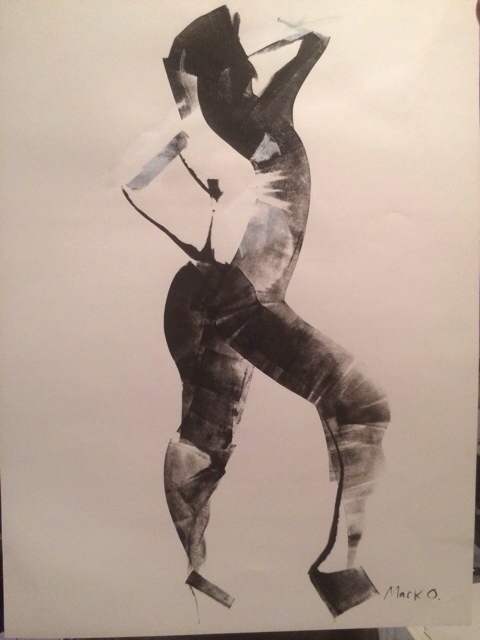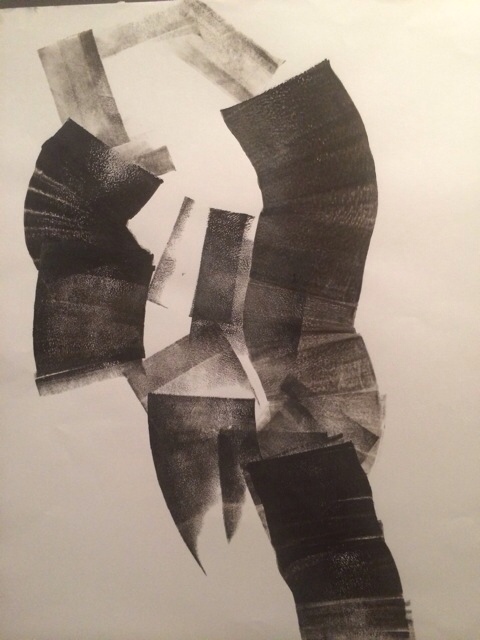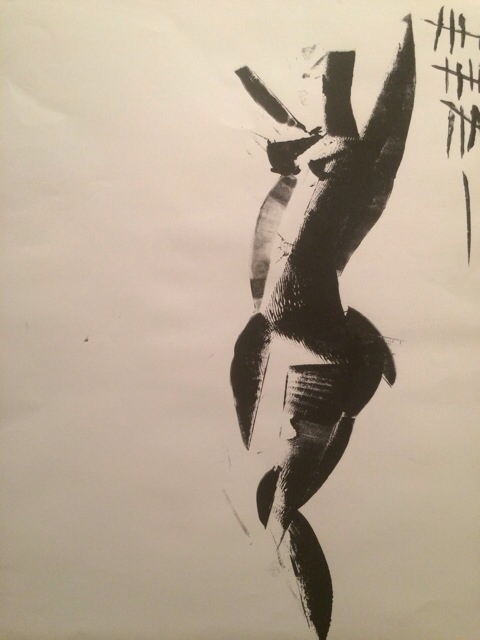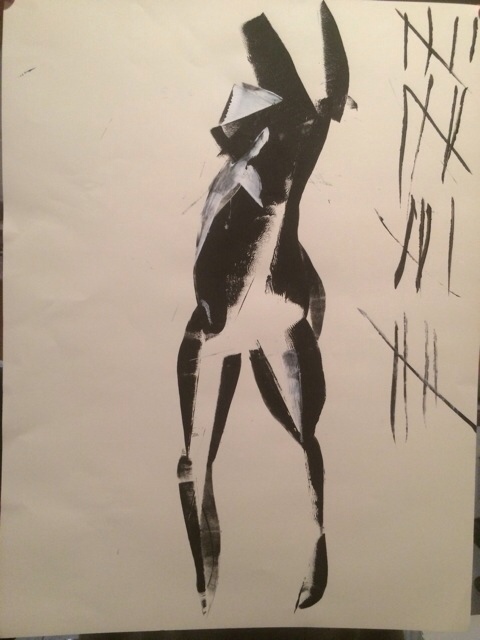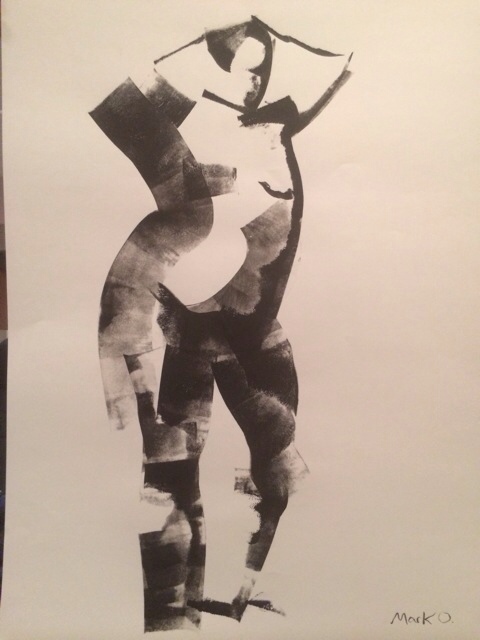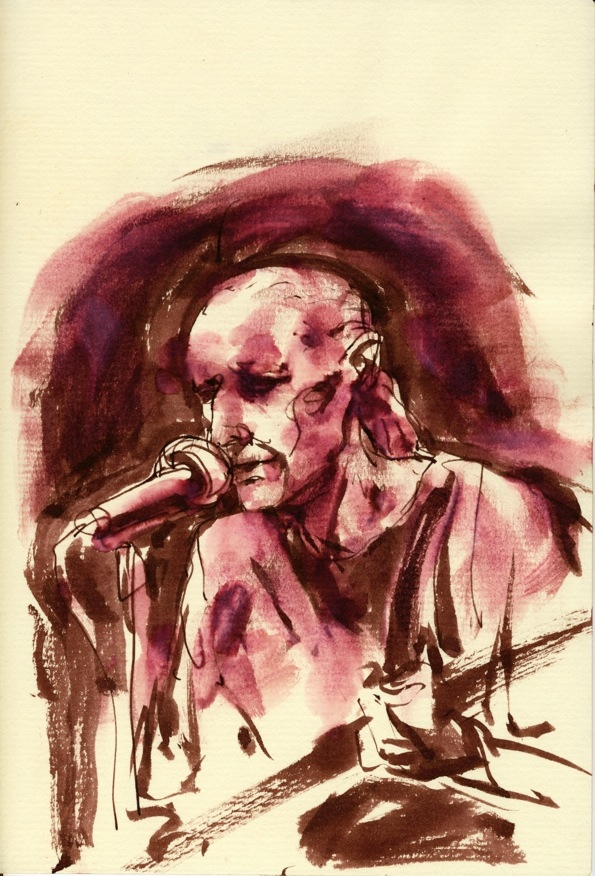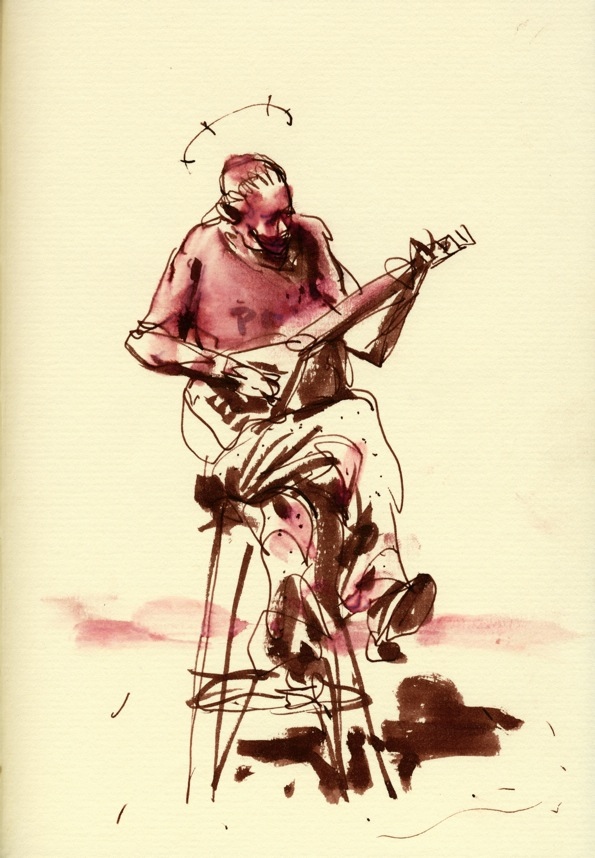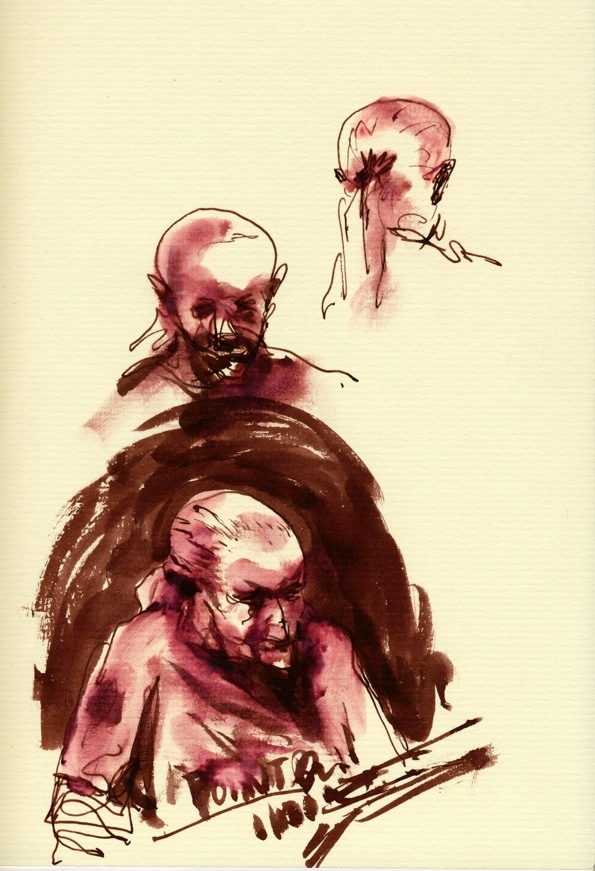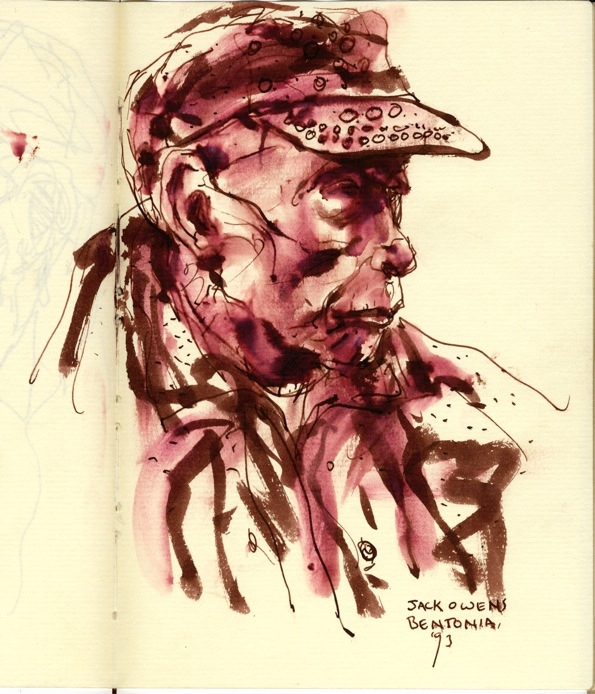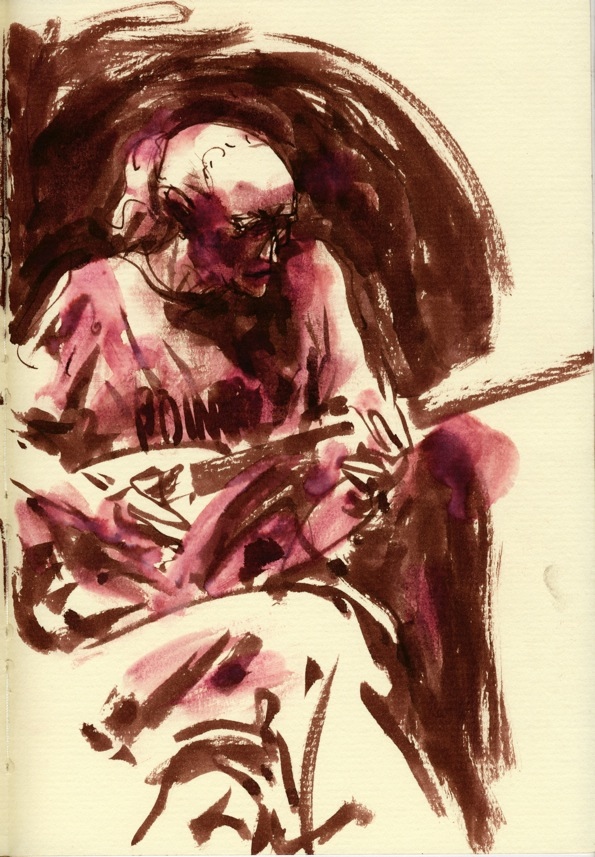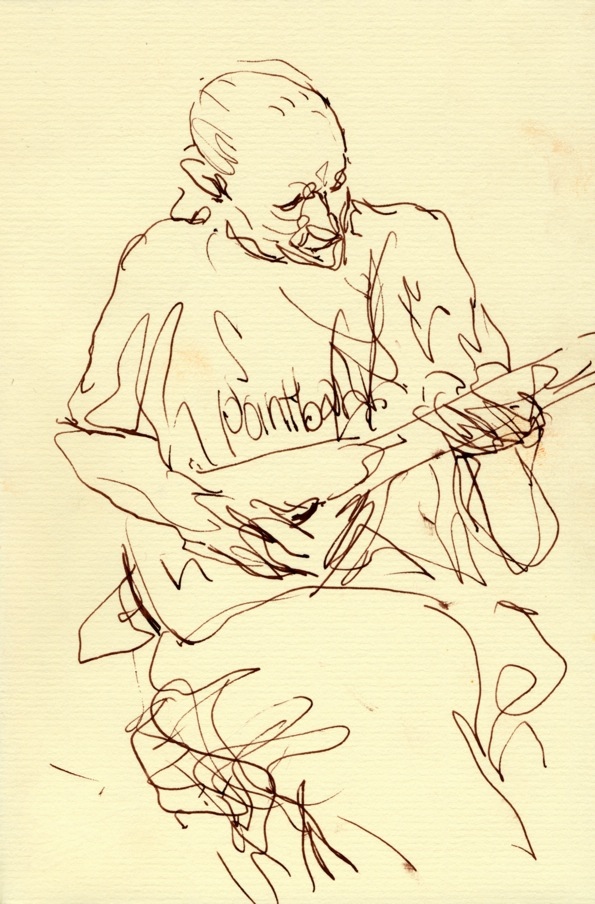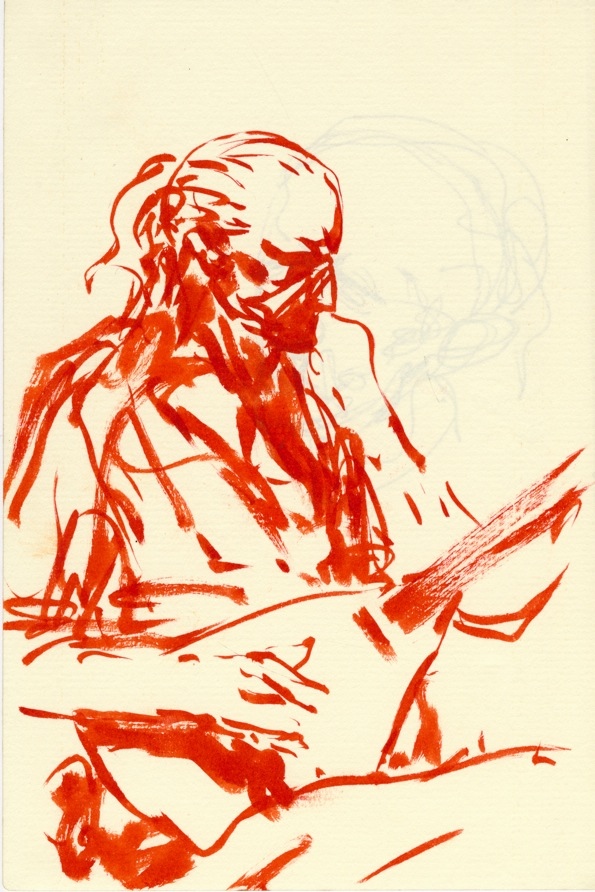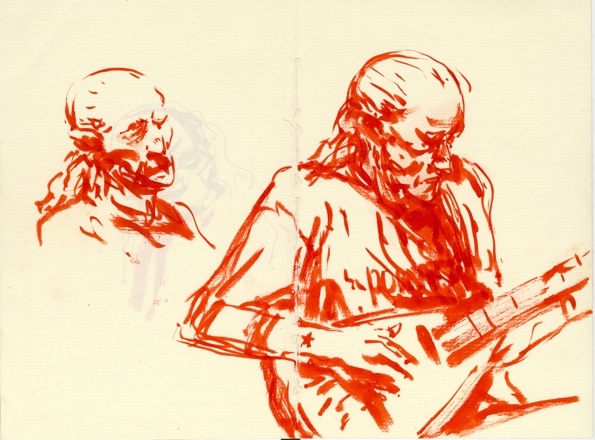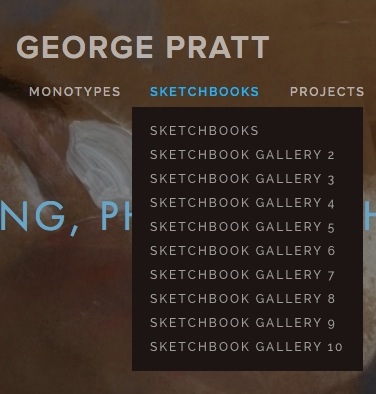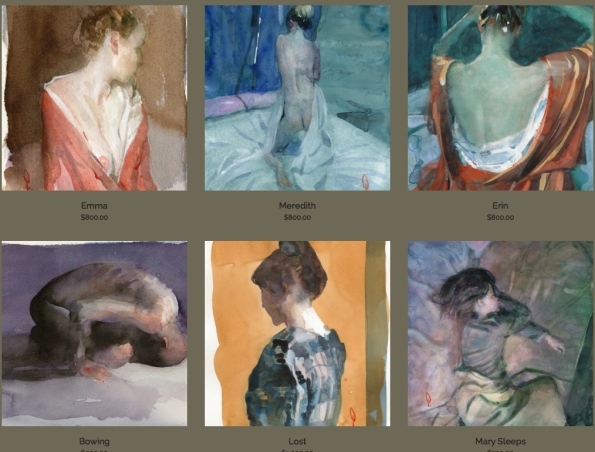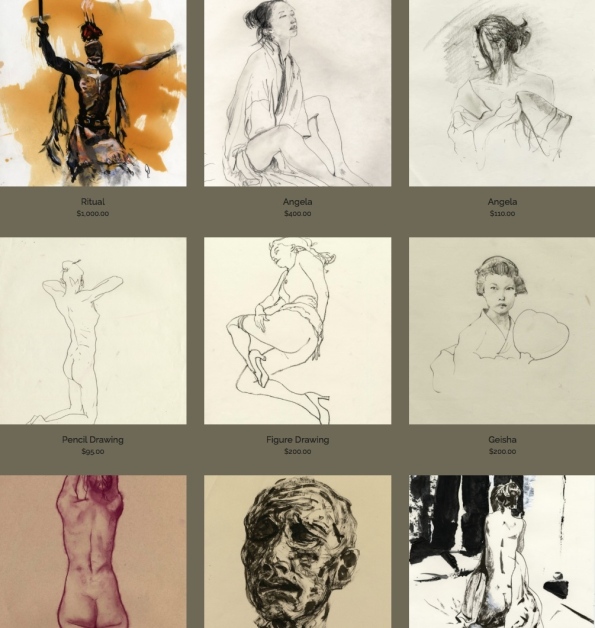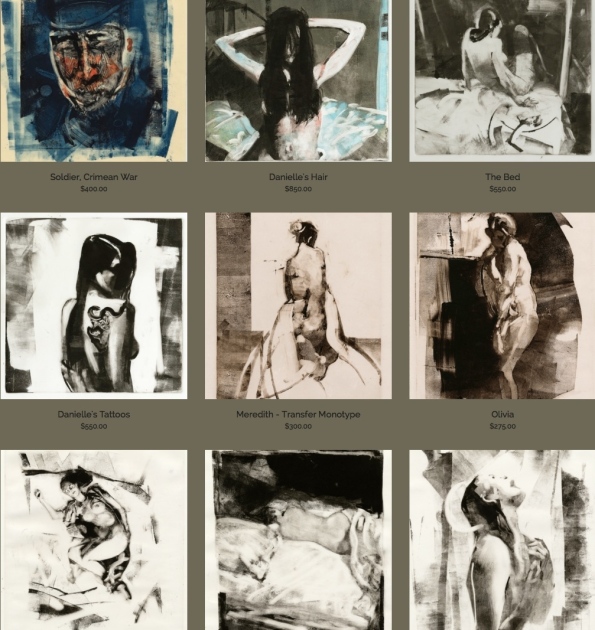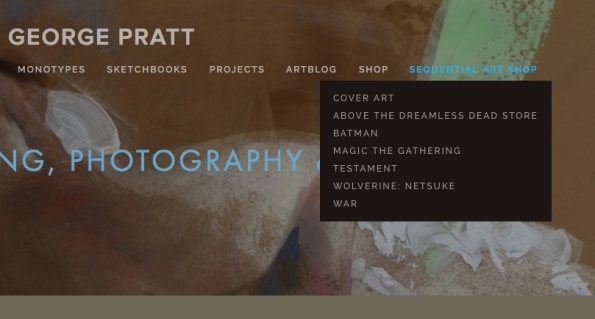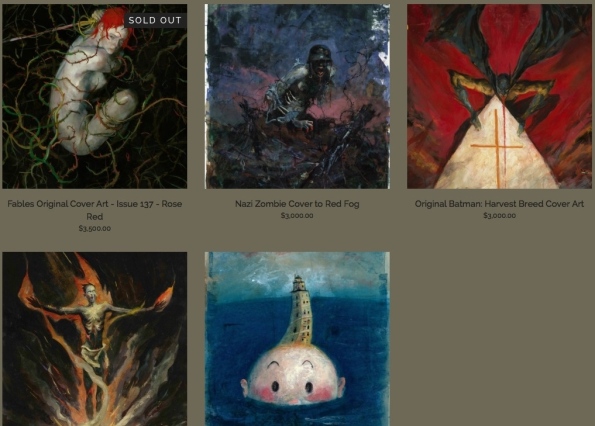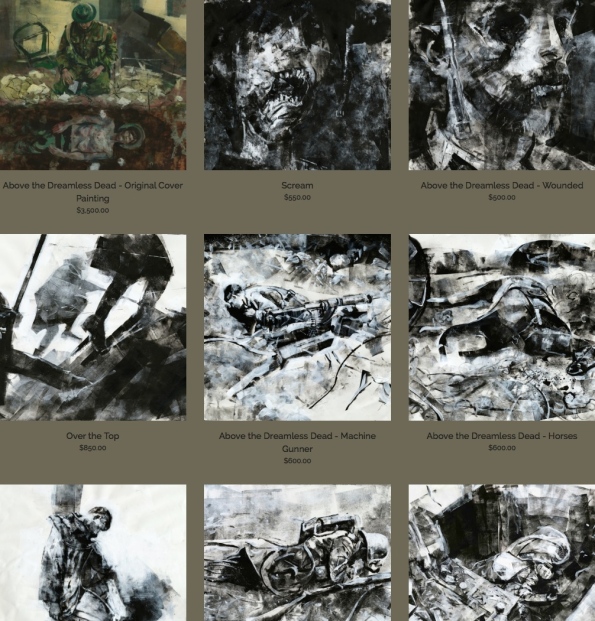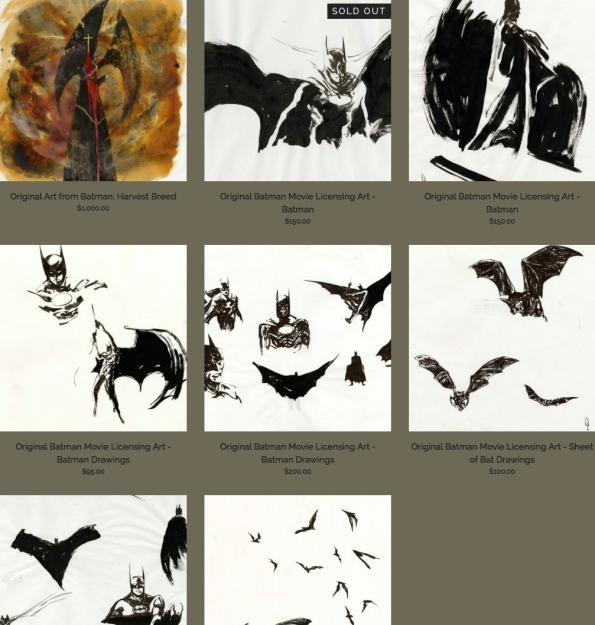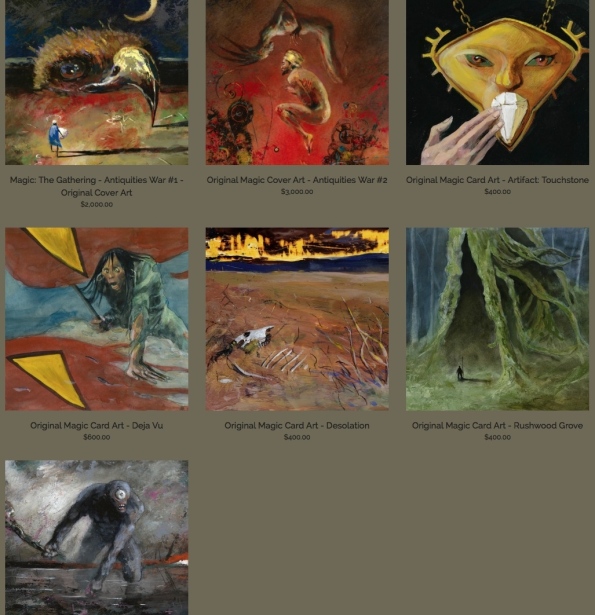Installment Five
By Ali-Baba
Note: To try and expedite getting the blog closer to up to-date I’m going to post just the text and, hopefully, add pictures later.
We boarded a train for Fez, the one-time capital of Morocco, the next morning. The fares were incredibly cheap. We bought first class tickets and were told that we’d be able to put all our luggage in the cabin with us. The train ride was nice but long. Eight hours. There was a mother and her two young daughters as well as a young woman in our cabin. After a couple of stops the family disembarked and a young man entered. We spoke to him and the young girl for a bit. I don’t remember where they were each getting off, but I got photos of them with Mary’s cat.
After they left two older men got on and they proved to be super nice and very informative. They asked us how we were finding Morocco, where were we from, etc. Turns out one of them owned one of the cooperatives of the tannery. We’d done the tannery in Marrakech and weren’t that excited to do another, but he assured us this was the real deal. He gave us his card and phone number and said we should come early in the morning as the Berbers would be lining up with their horses and donkeys to bring in their skins for sale, which only happens on Sundays. We’d also get to see the ladies doing intricate design work! He said he’d send his nephew to come get us and bring us to the tannery. He told us also, that when we get off the train to go past the taxi stands and walk to a gas station outside the terminal. He said that 15 dirhams each should be the price to get us to where we needed to go.
Well, it was quite a little journey just to get to the terminal, much less outside of it. When we finally stepped outside we were practically accosted by taxi drivers throwing out prices. We ignored them and began making a beeline for the gas station. One guy was really getting in our faces and wanted something like 75 dirhams for the ride. I said 30 and he laughed at me. I shrugged and we walked on. He kept coming up trying to get us to ride with him for 75. I kept insisting on 30 and he finally blew us off. We were just about the cross the street for the gas station when that same guy came up and said 35. Fine.
We threw our stuff in the car and there was another passenger there as well in the front seat. The driver was brusque and fairly rude. Jon had remembered that we should be dropped off at the Post Office and he had instructions on how to get to our Riad from there. The cab driver had other ideas and stopped at the Police Station. Jon pointed at it and said Post Office? Which of course it wasn’t. Jon told him that we wouldn’t get out of the car until we were at the Post Office. The guy was totally exasperated and peeled out doing a crazy K turn in this busy street. He zoomed around the corner and across another street and into a cul-de-sac and there was our Post Office. We paid the man and he peeled out, totally pissed off.
Our Fez adventure had begun.
Fez started out on a rough note. Jon was aggravated, having just arrived loaded with bags after an 8-hour train ride and then arguing with the taxi driver, and so some of it bled into his initial interactions with the staff at Riad Louna. I think I was just too tired to be reacting to anything, really. He later apologized and we both found our stay at Riad Louna to be incredibly nice. The entire staff has been wonderful and the room well maintained (with AC!). Riad Louna (pronounced Luna) is located inside the Medina down a long narrow cobbled passageway just past an herbalist. The atrium is pretty with an ornate fountain in the middle where birds fly down and bathe. The wifi connection is best down there but it does get up to the rooms, though only a weak signal. There’s a restaurant up top and various levels of rooftop to lounge about in. We ran about a bit and found a place to eat, then made an early night of it.
We got up early and met Omar’s nephew, a quiet, bearded thin man, who led us to the tannery. Because we were up so early there was no one in the medina. The shops were all closed, no merchandise was out, shutters were bolted and the morning light was slowly beginning to reach into the dark alleys and passages. Wandering down those narrow labyrinthine lanes with no one about and the light feeling a bit otherworldly one could really see the old Fez peeking through. The confined space, more hallway than street, was wonderful and mysterious and so out of what we see in the course of our every day lives back home. Everywhere I looked was a painting waiting to happen. Compositions everywhere! We would turn down an alley and confront a mule loaded down with who-knows-what, just standing beside a great doorway framed by a wall right out of all the paintings we’ve seen by Sargent and Fortuny, et al. At another turn would be a poor beggar dressed as though he or she were out of the same paintings. As if time stood still. Later these passages would be teeming with vendors and vagabonds and tourists from all over the world. As we walked Omar’s nephew filled us in on some of the history of Fez, what certain symbols on doorways meant, and why there are two metal knockers rather than one on doors (one for the guys one for the girls, each with different sounds), how to use different signs to know your way around Fez, to get to different colored gates, etc.
This morning’s stroll seemed to take a fair amount of time and the narrow path we were following, in contrast to Marrakech, angled downward so much sometimes that I could look far down ahead at another dark arch, and at other times could only see a few feet ahead. We both remarked that Imlil’s exhausting hikes were great workouts for Fez. Looking up one could see some of the ancient superstructure of hand-tooled wooden beams angling up the sides of the walls, seeming to keep the buildings from colliding with each other, forcing them to keep their distance, pushing back against each other.
We finally pulled up short as our guide pulled a leather thong bristling with keys from under his djellaba and unlocked a thick metal door. We found ourselves inside a large cooperative leather shop. He informed us that Omar, whom we’d met on the train, would not be coming in today, and introduced us to a young man who took us on a tour of the facility. We taken to the top of the building which looked down on the dye vats of the tannery, and brought us hot steaming cups of sweet mint tea. He told us that we could work from here and draw or paint as we pleased. The tea was great and the sun was not fully up so the heat wasn’t slamming us yet. We thanked him and pulled our sketchbooks out, found a couple of good spots and began drawing. The ever-present cats came over to keep us company. We worked this way for a couple of hours trying to captures some essence of the views we had to work with. Later we made our way back down and were given the hard sell that is typical it seems. I agonized over slippers for my mom and my daughter. I’m a softy. It’s a weird position to be in. I’m bummed that I’m being hit up, but I also want to buy something to help people. Not that Jon didn’t but his tolerance was a lot lower than mine. Rather than all the bargaining and back and forth he would just give the guy some money and be ready to bolt. It’s something that became a virtue for sure, otherwise your time would be totally eaten up with bargaining.
It wasn’t lost on us that there were no donkeys lining up outside as we were told would be happening, or that we didn’t get to see the ladies who would do all the embroidery and handwork. So as we were leaving I hit up a guy in what looked like a lab coat to get down where the tanning vats were and to shoot some pictures there of the men working. He agreed that we could do that. My mistake was in not wearing my hiking boots. I was in my sandals and the area down there is wet and muddy and who knows what-else, but I bit the bullet and traipsed on in. It was pretty precarious because it was so slippery and you definitely didn’t want to fall into a vat of pigeon shit, which is what they treat the hides with. Anyway, I got some interesting shots of various workers. There was an older gentleman dipping a large, heavy brush into a pail and slathering this over several hides. There were piles of these hides stacked on top of each other, small mountains of them. The stench was unbelievable. My heart went out to this guy. He had to be in his seventies or eighties and the work was obviously hell on his back, arms and legs. I thought of people that age back in my hometown and what if they had to do that kind of work? Hell, I hate that people that age have to work at McDonald’s back home! I pointed to my camera and he smiled and nodded as he sat down for a much needed rest. It’s an interesting shot because his smile is genuine and welcoming as he’s surrounded by this foul-smelling mountain of hides.
Leaving I paid the guy in the lab coat some money to give to the workers, who gave me a thumbs up and a smile. We were glad to get out of there because of the smell. We were there for only a few hours and the smell is nauseating. It makes you wonder what the effect is on the health of those men working in those vats just so people can wear these colorful leather goods. According to an article I read (Fascinating & Toxic – Traditional Moroccan Tanneries —Air Date: Week of October 31, 2014) on “Living Earth”, PRI’s Environmental News Magazine, it’s been going on since the 14th century, and it’s a job that only pays $2-$5 US dollars a day. And the fact is that it’s horrible for their health. It has to be. Those pits are full of the chemical chromium which has been in use in the tanneries since the 1800s. And this chemical loses its potency fairly quickly, so the vats need to be drained and refilled. The drained vats are dumped in the river, so it affects the health of not just the workers but the popuLation of Fez as a whole.
We found our way back to Louna and took a nap. On waking up and after getting some chow we planned a trip to Chefchaouen, the Blue City. Chefchaouen has been on my radar for a long time. I’ve salivated over the imagery I’ve seen of this town on the internet. I’m a blue nut. This is a blue town. Need I say more? I couldn’t wait to get there!

